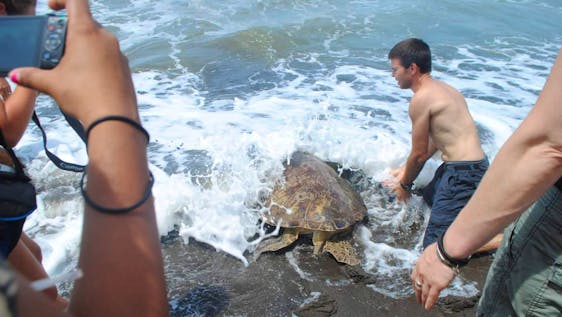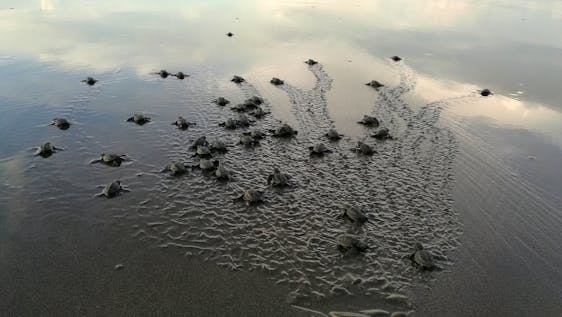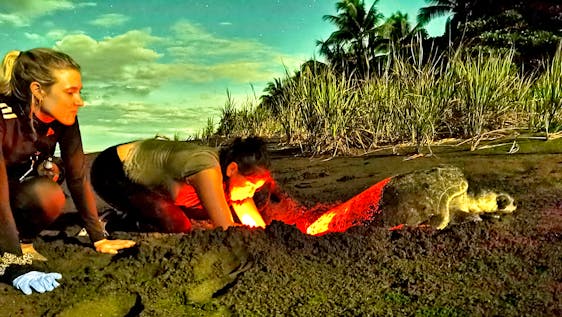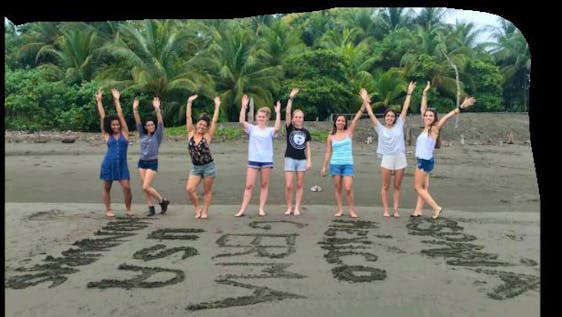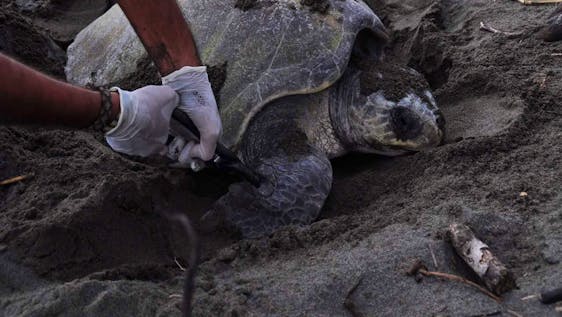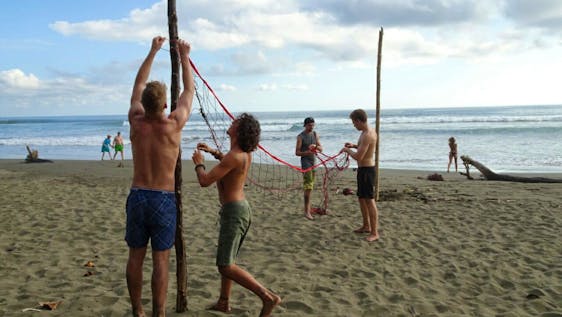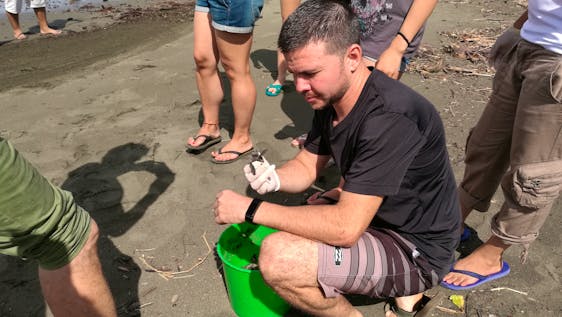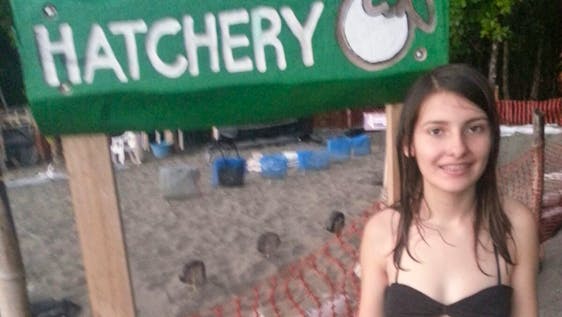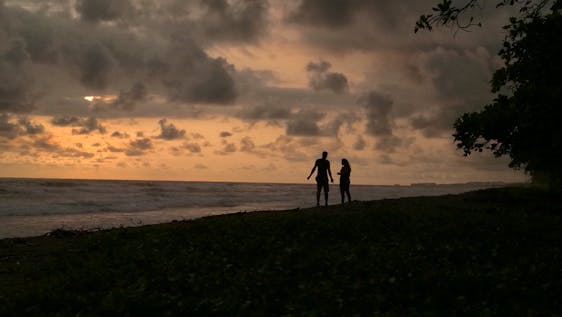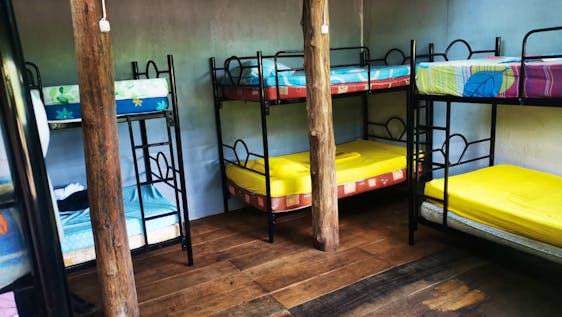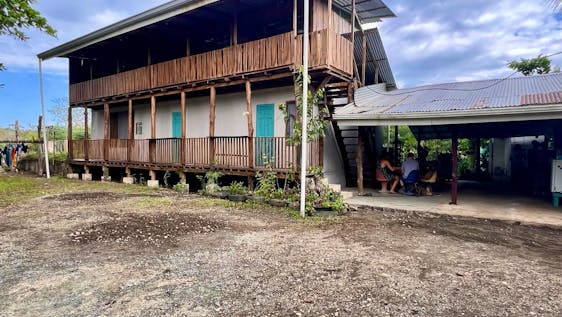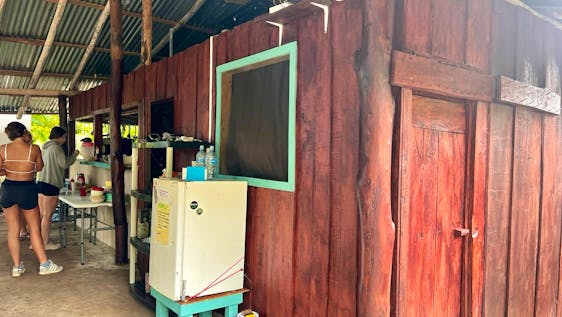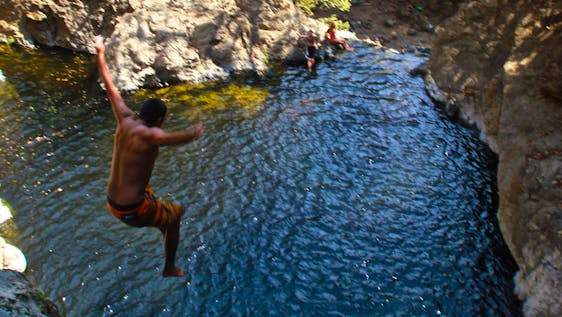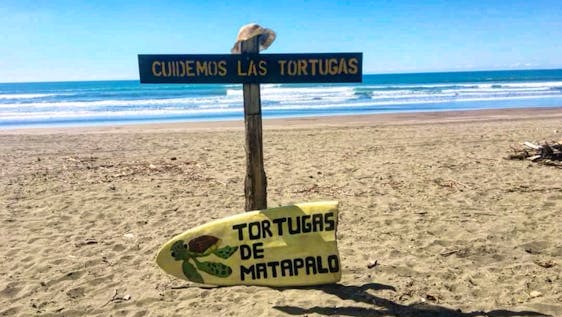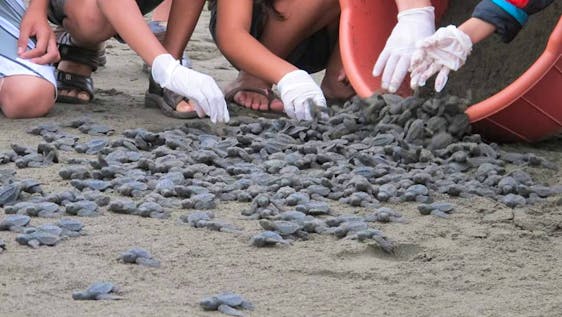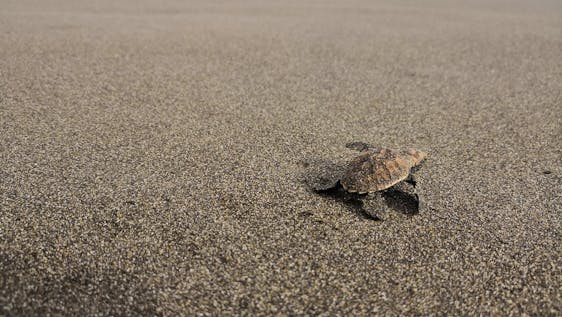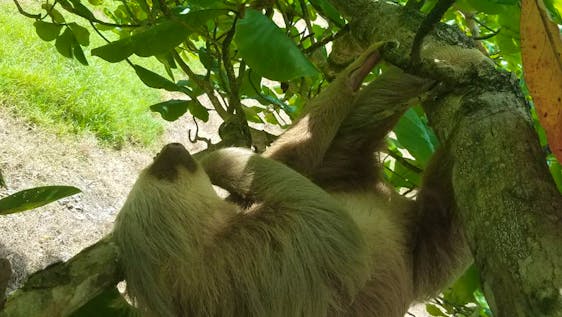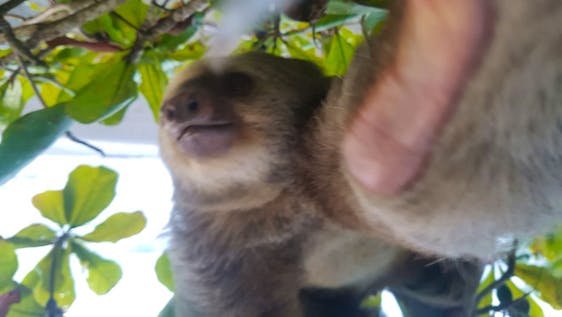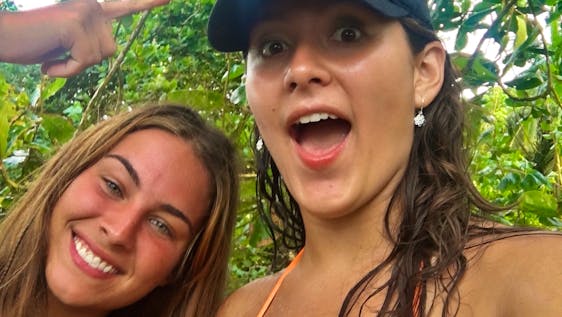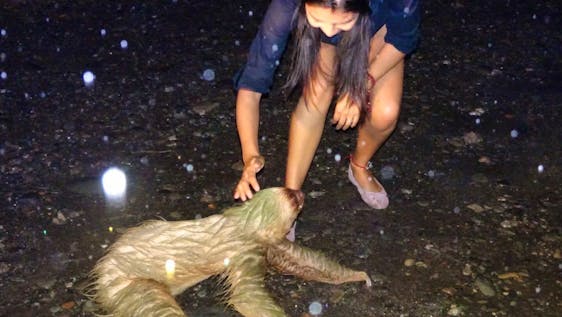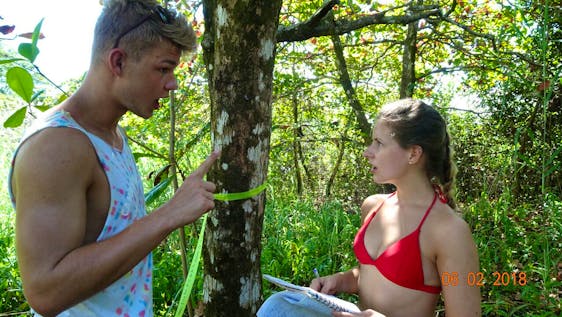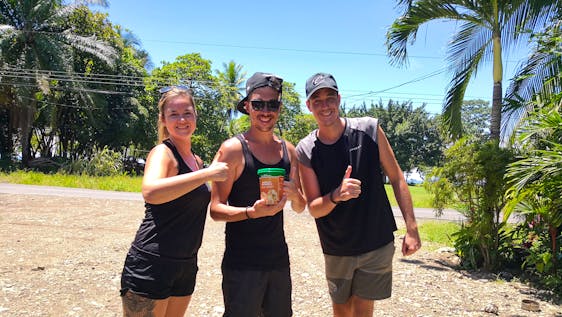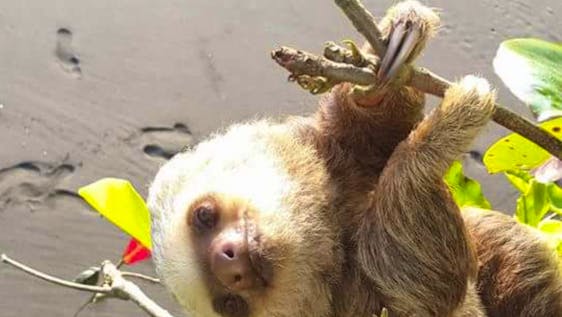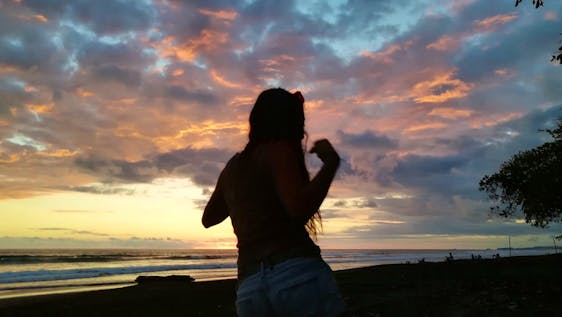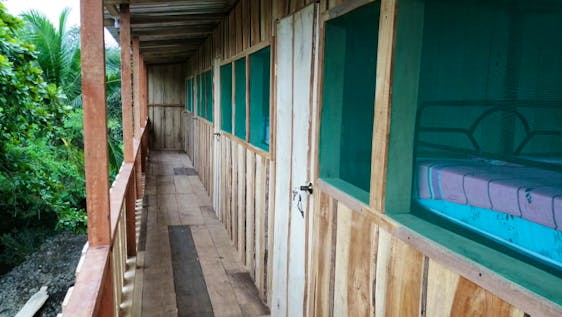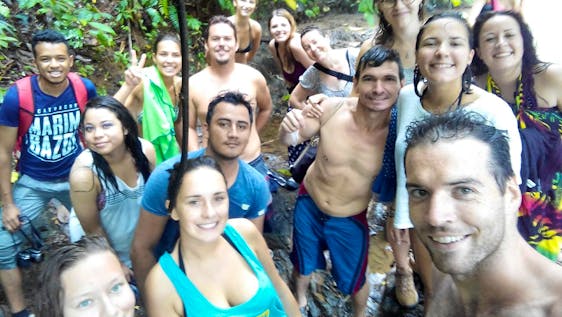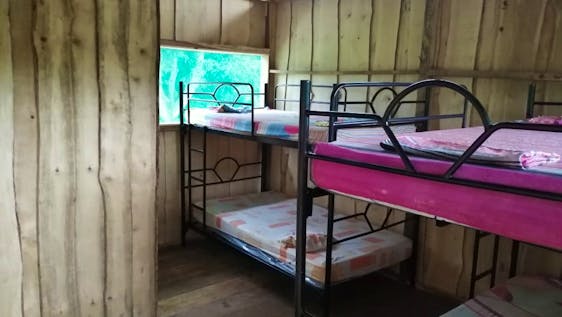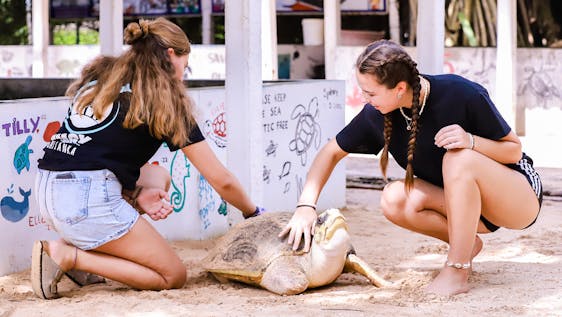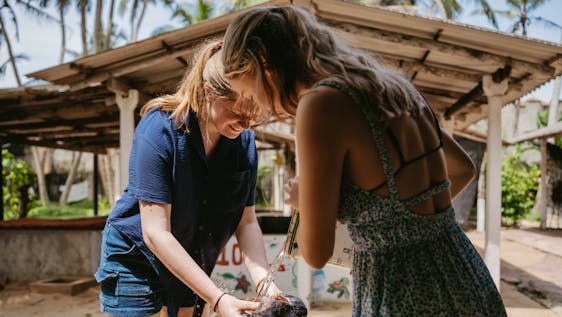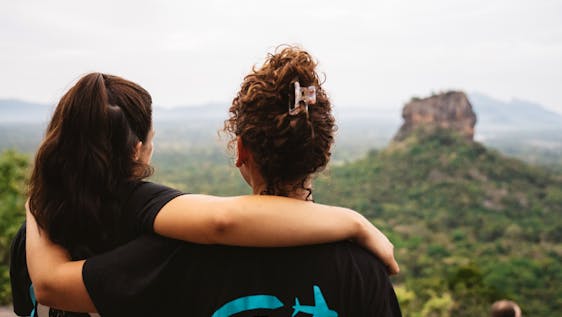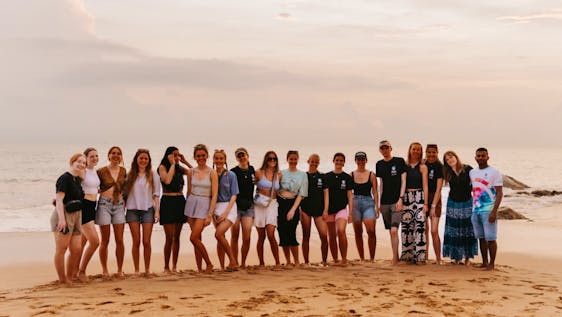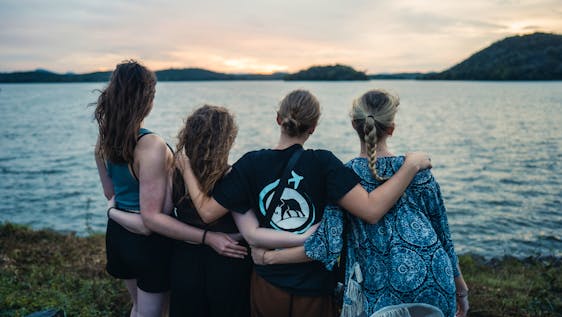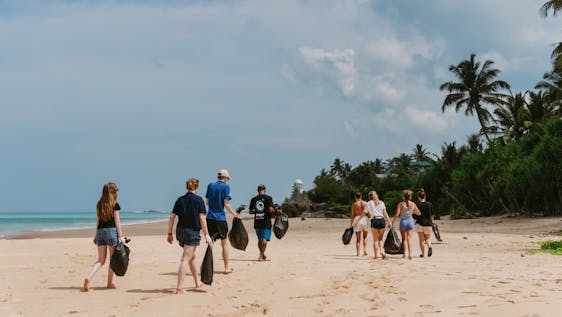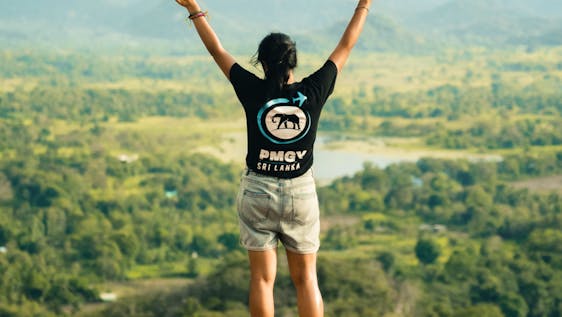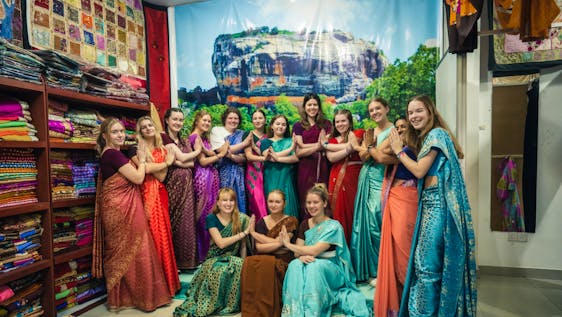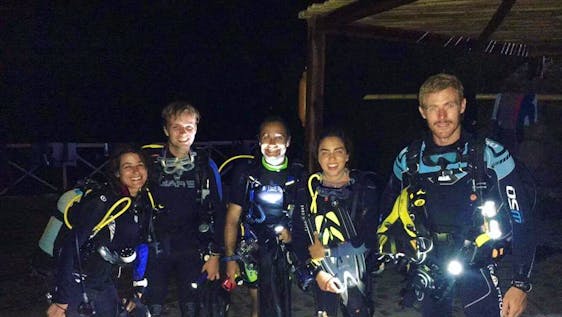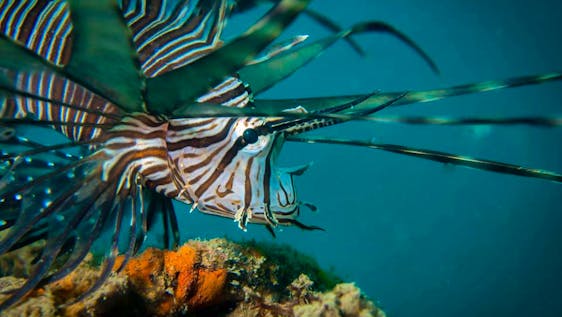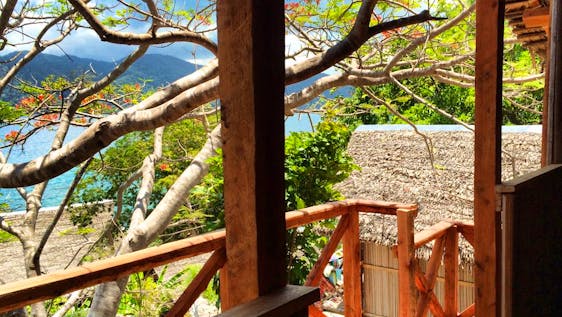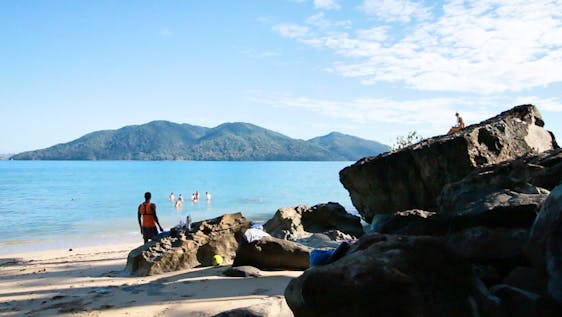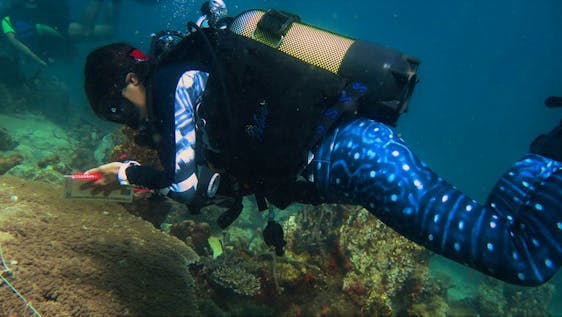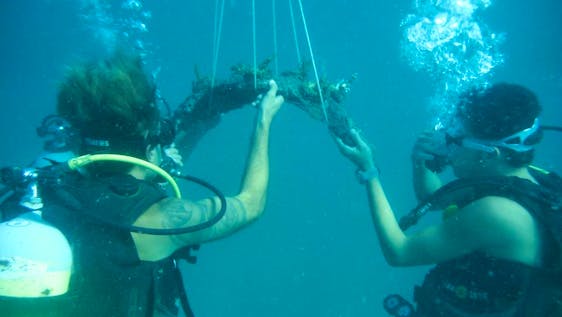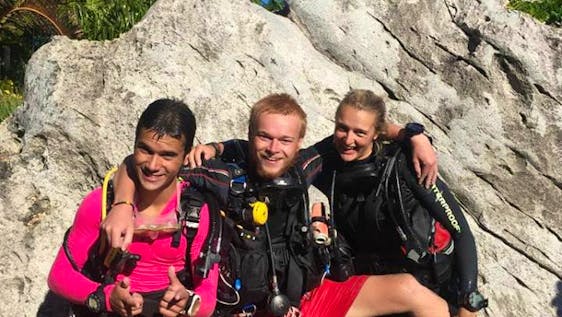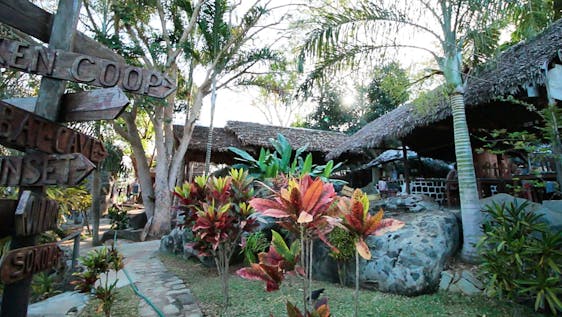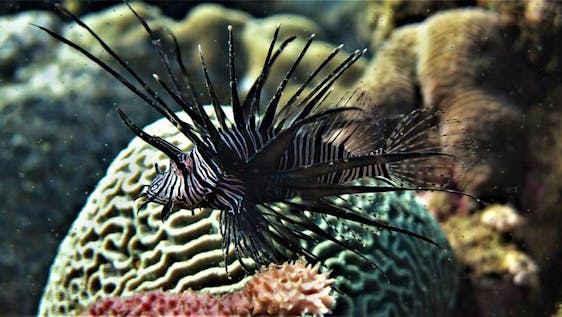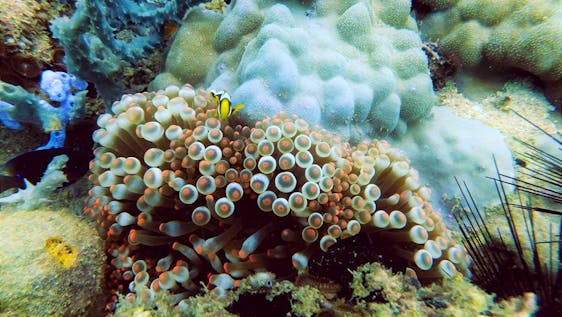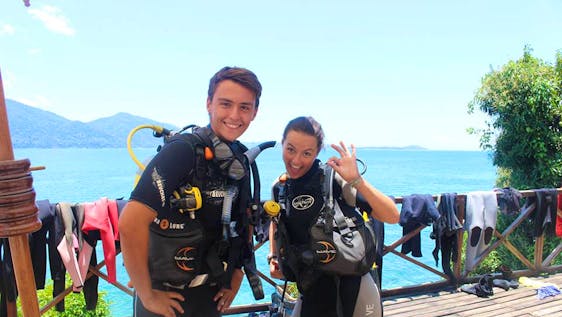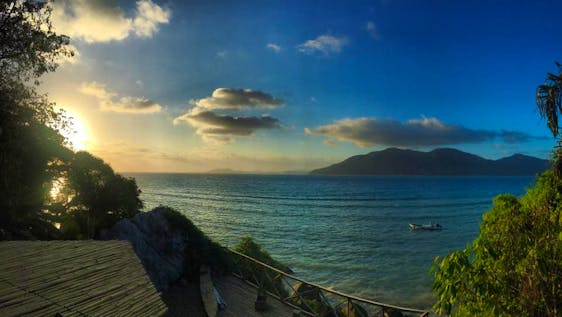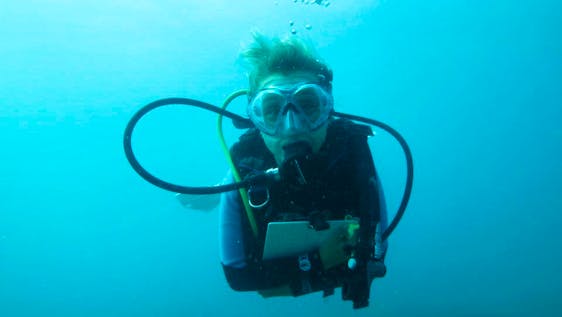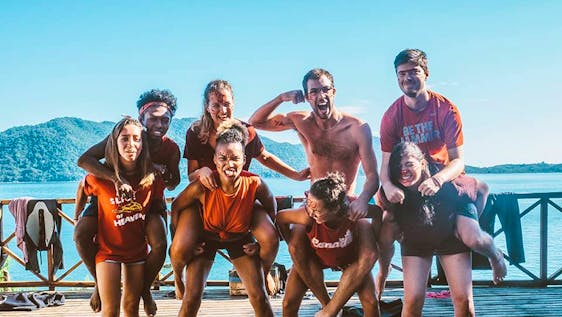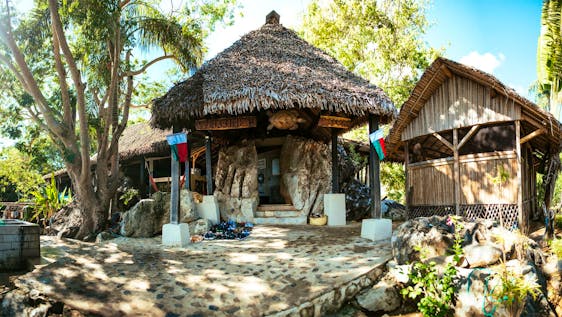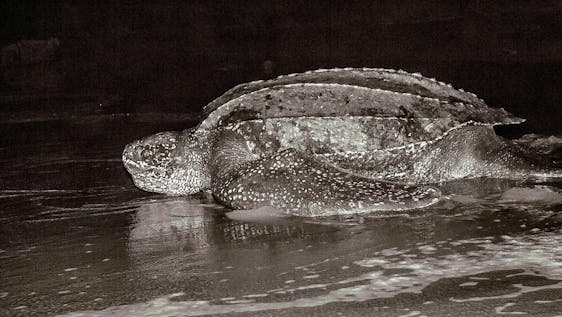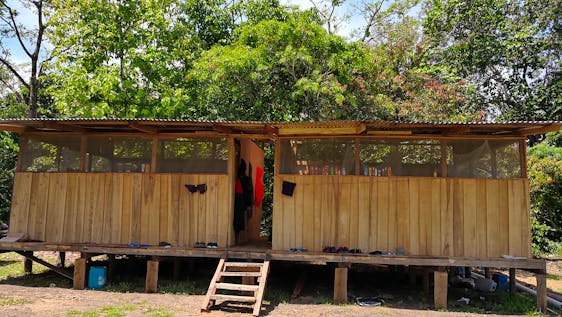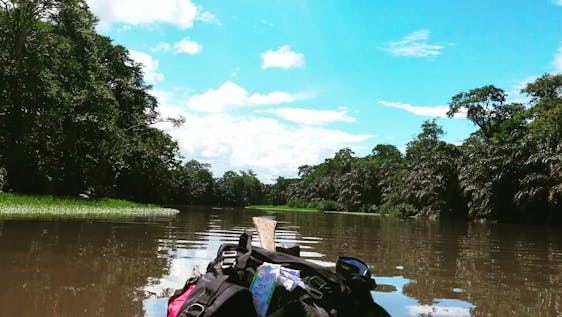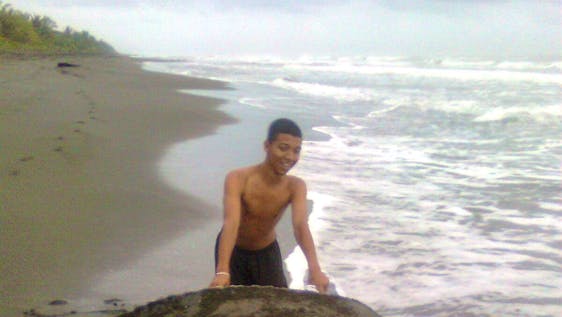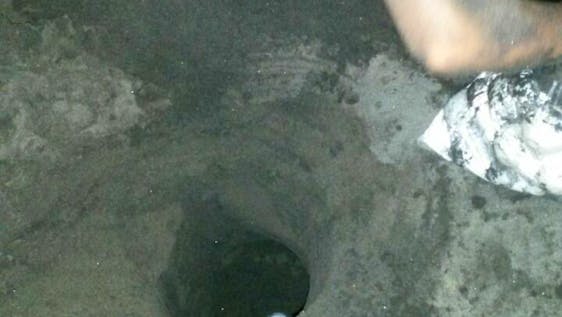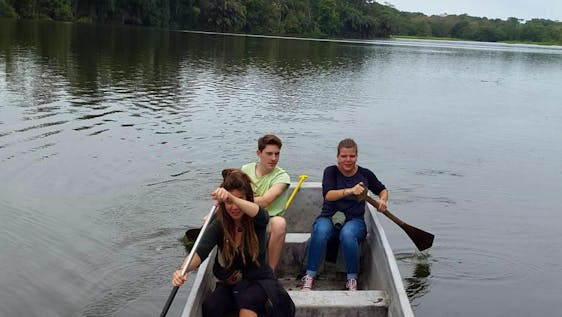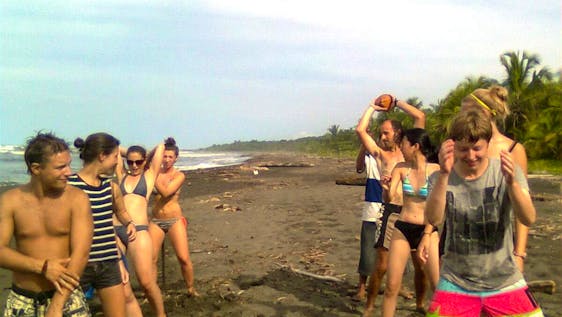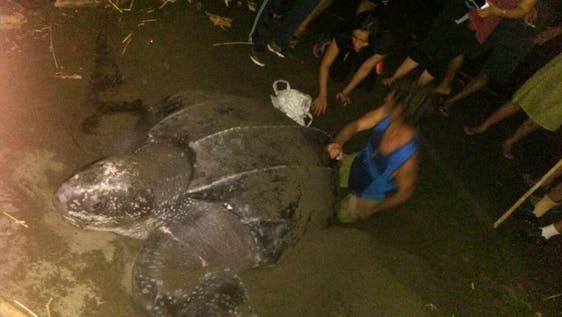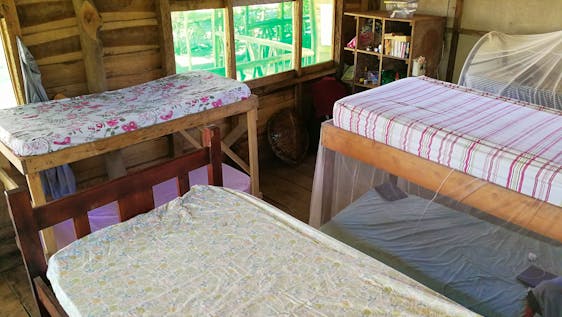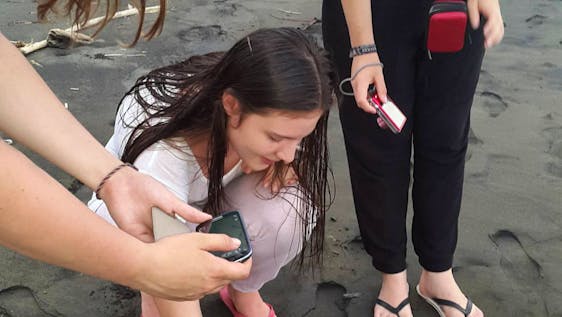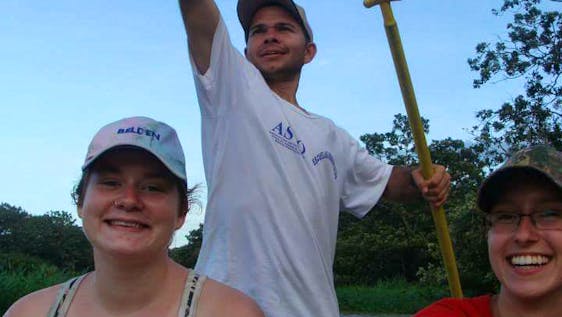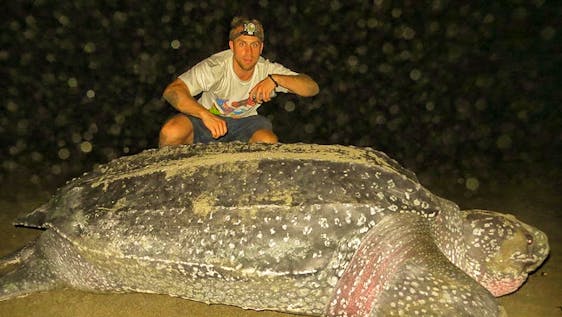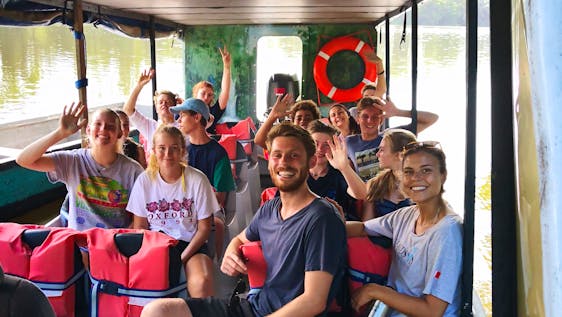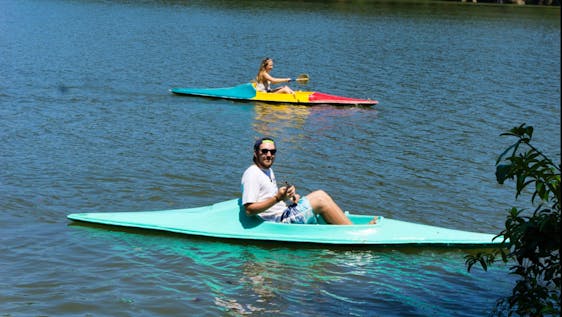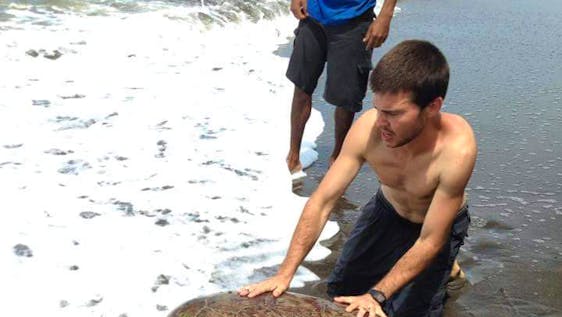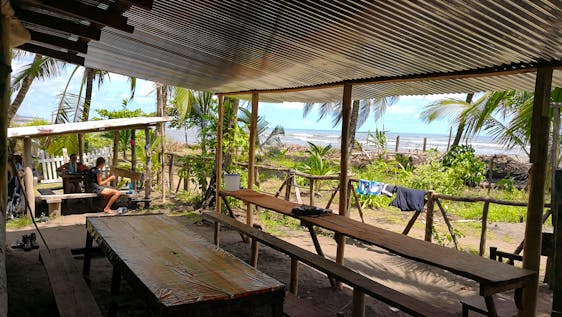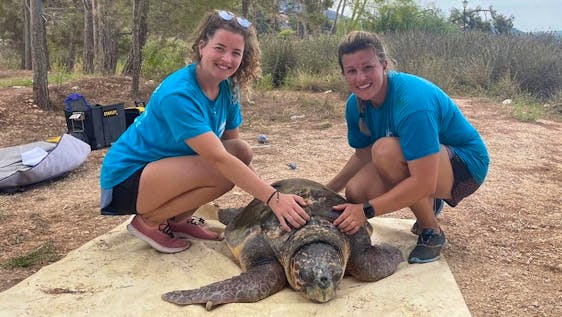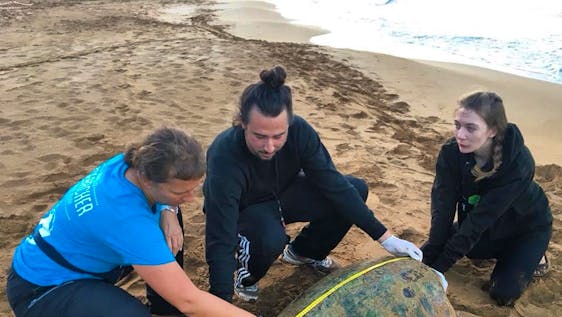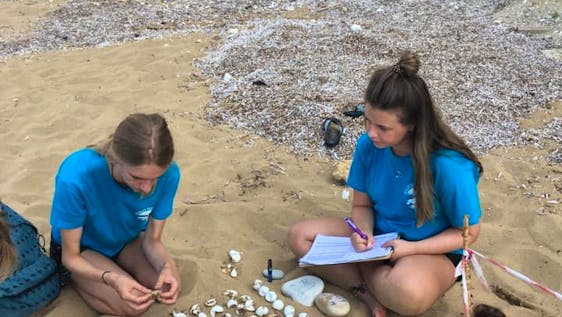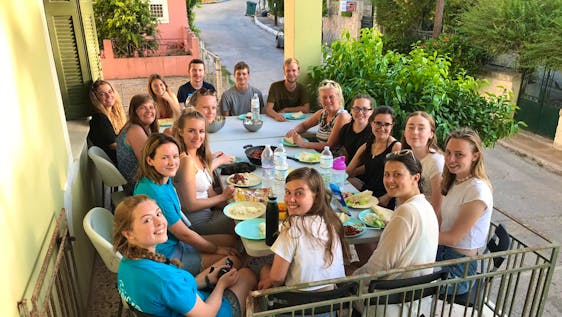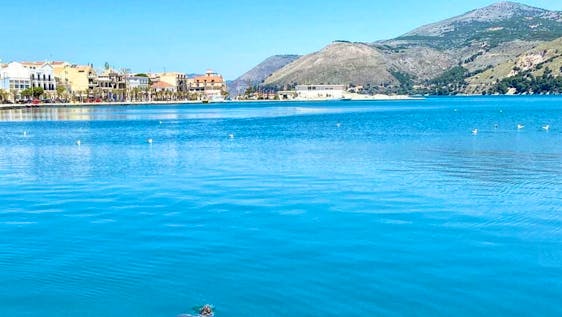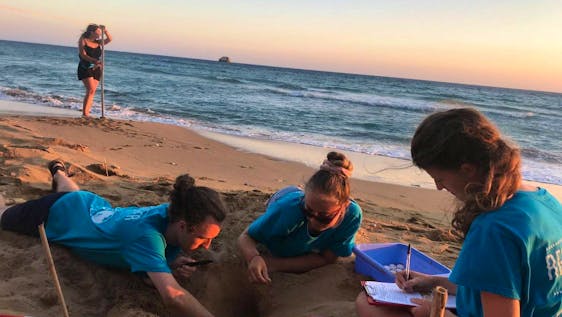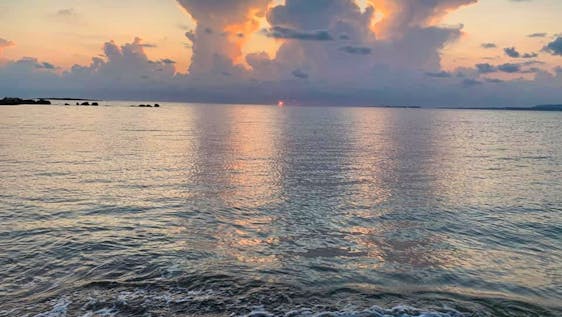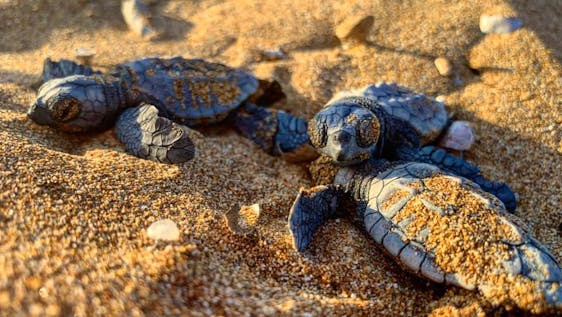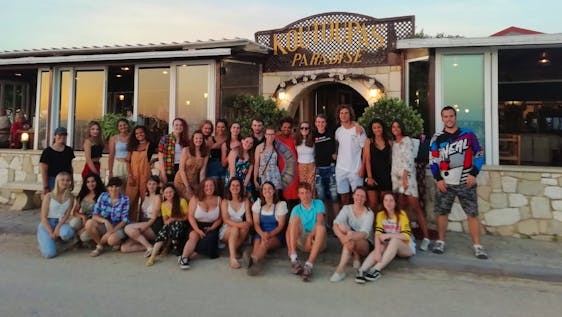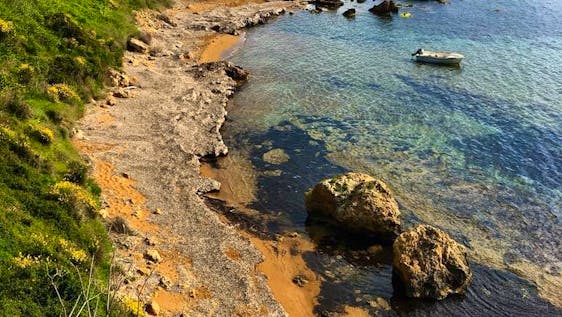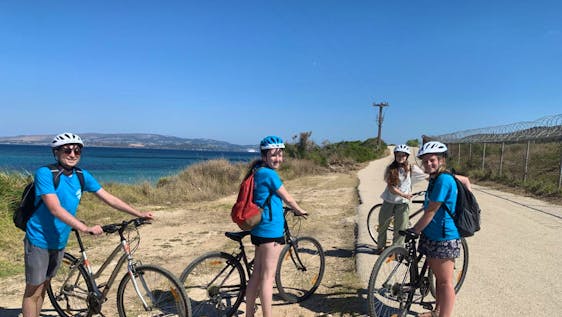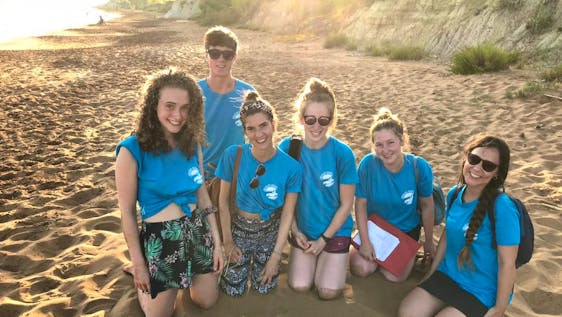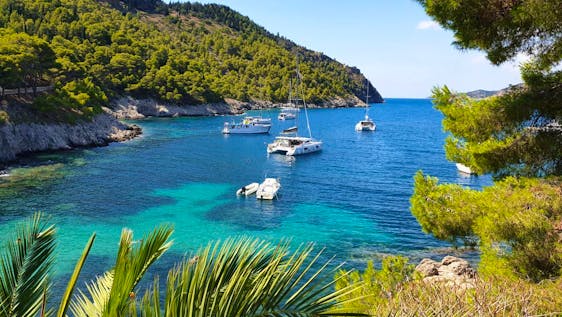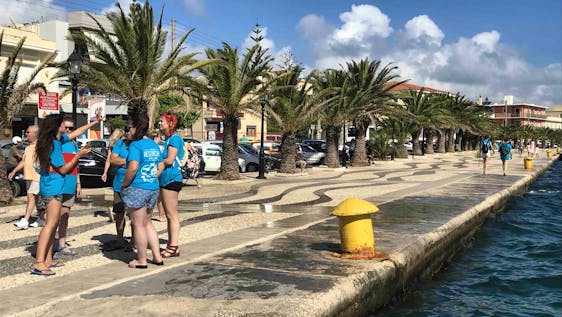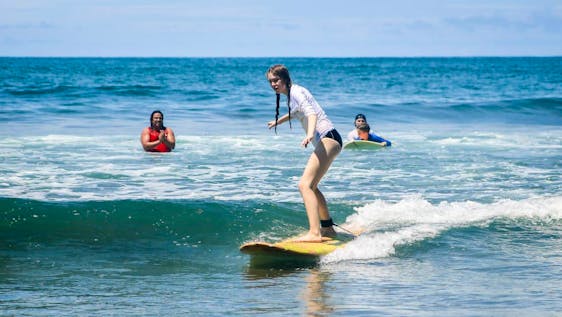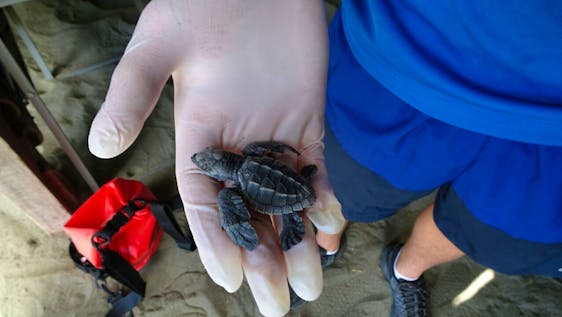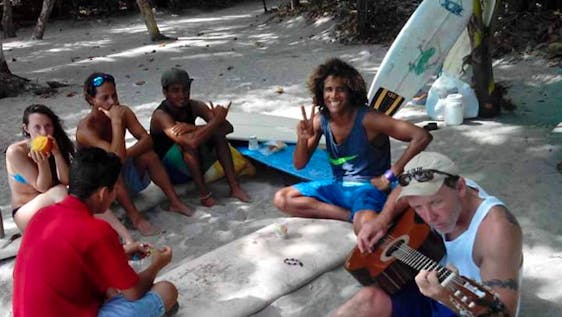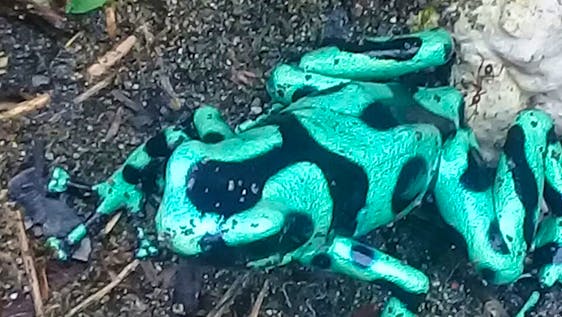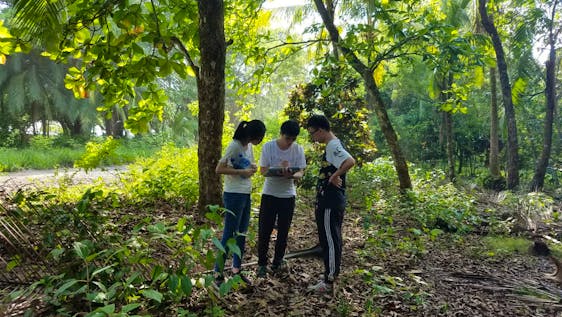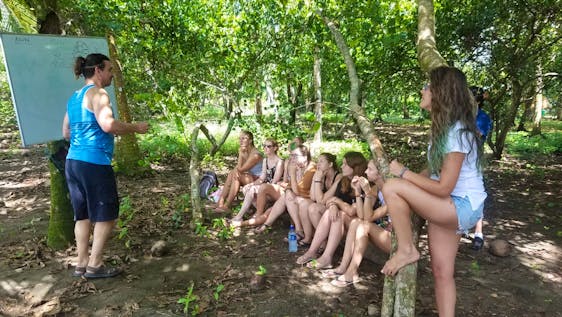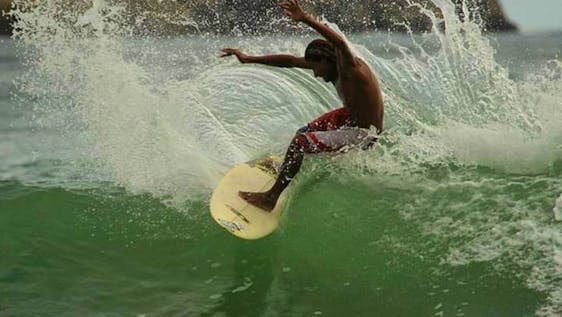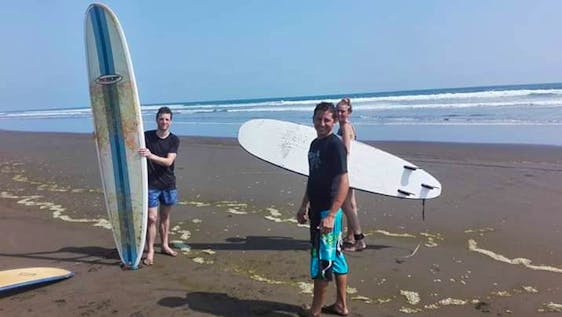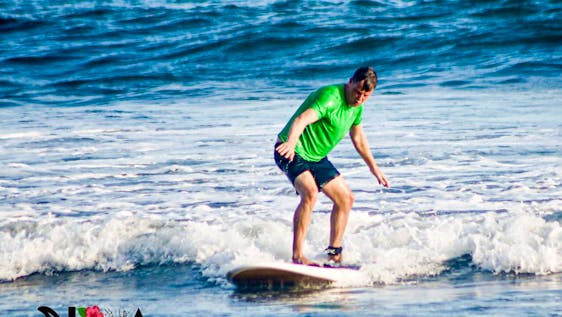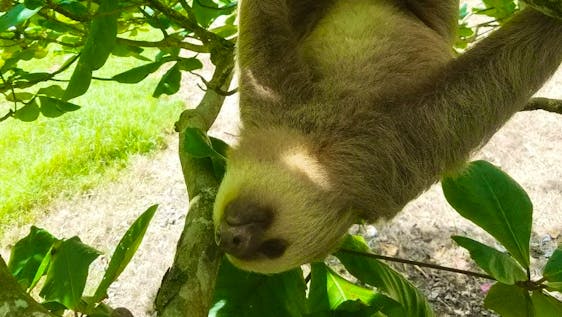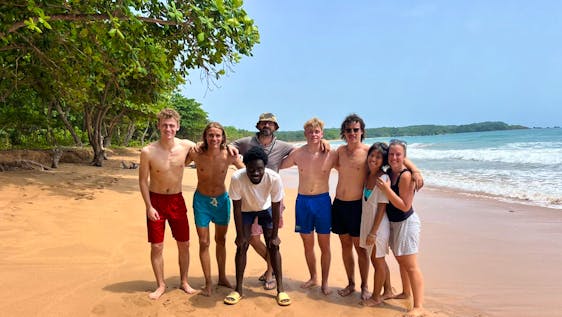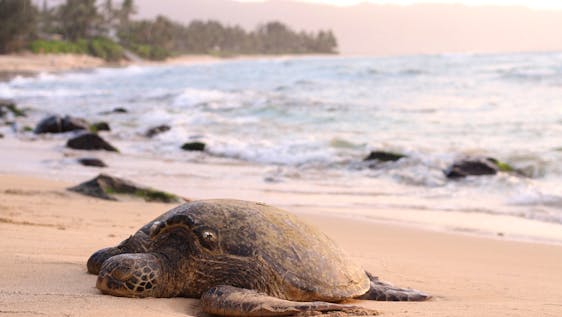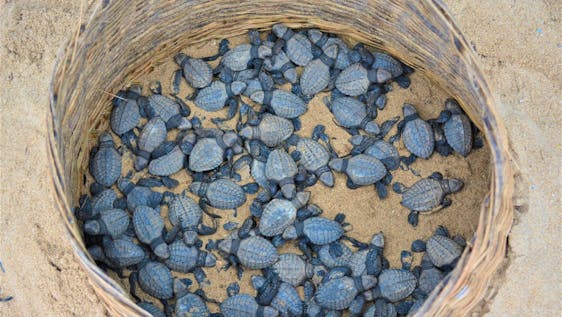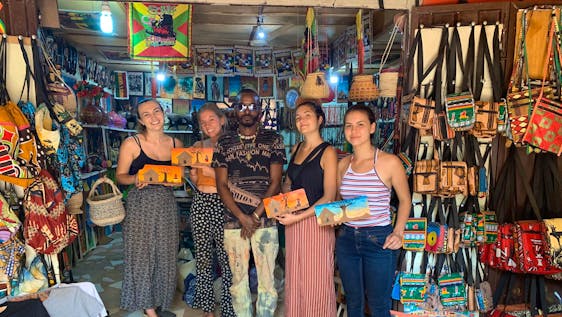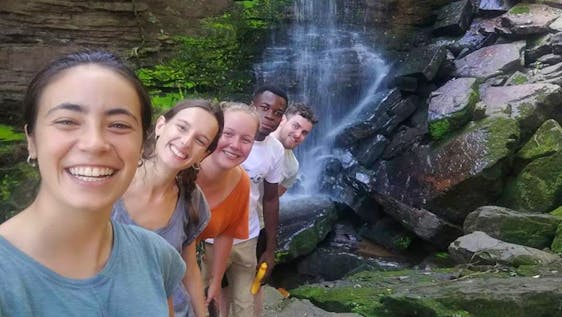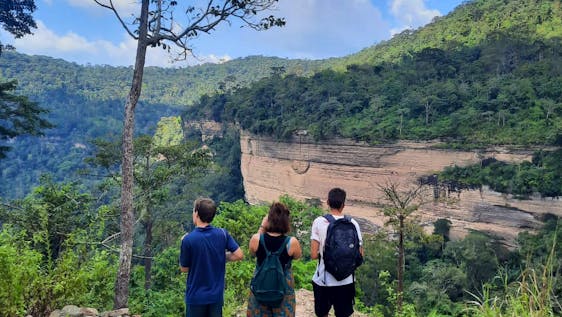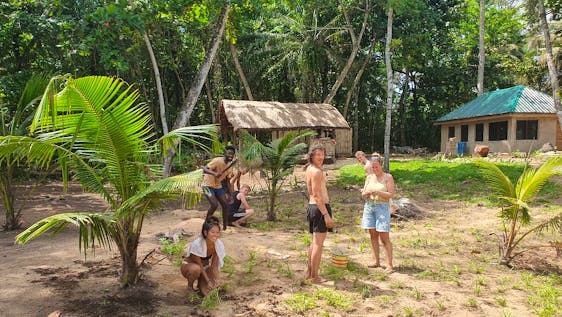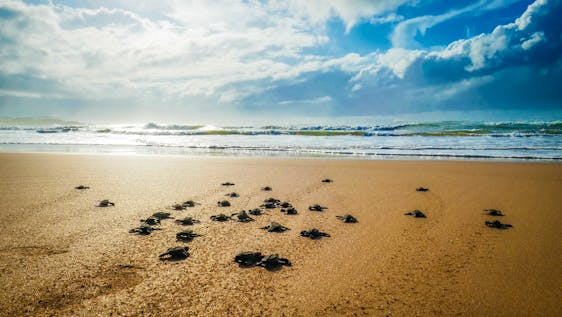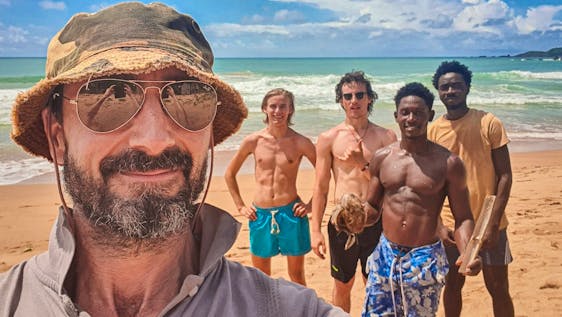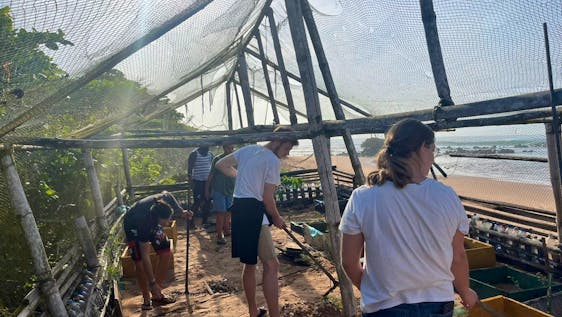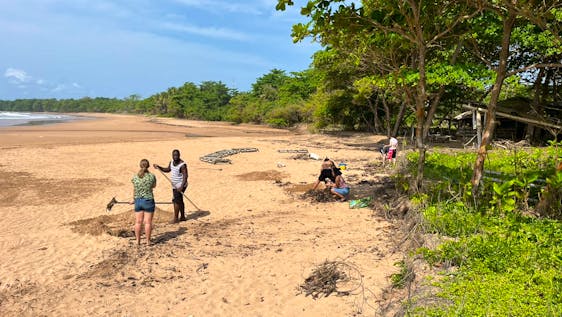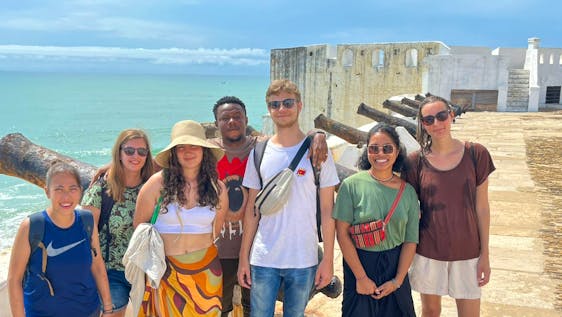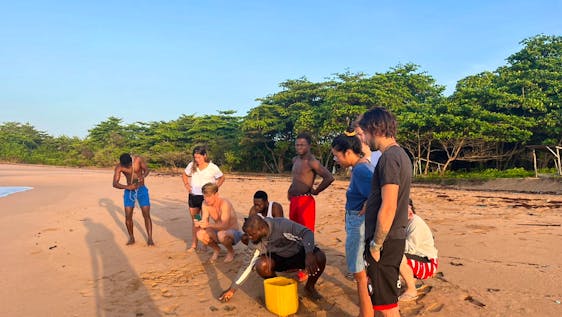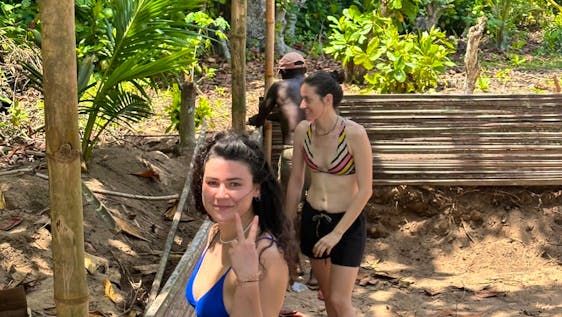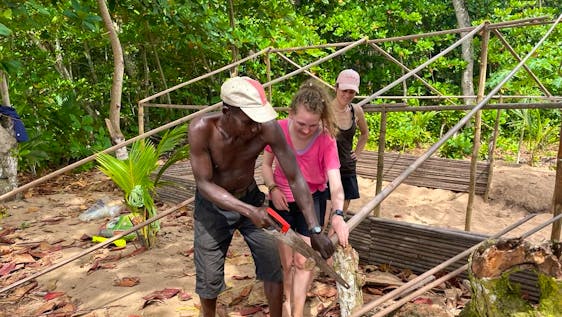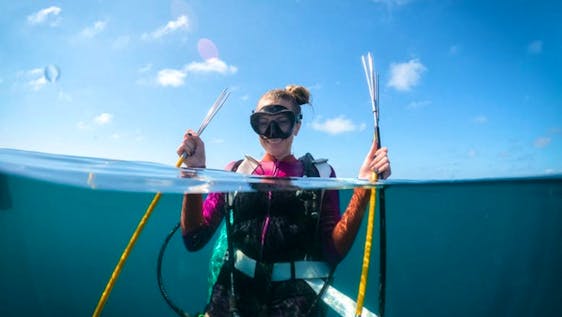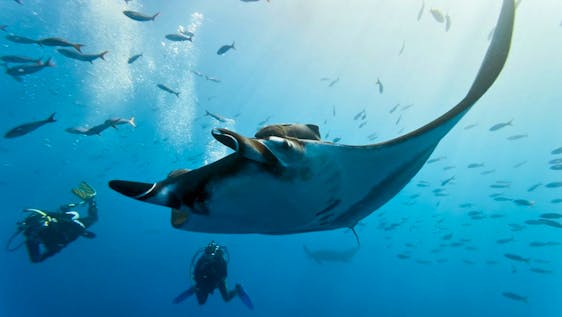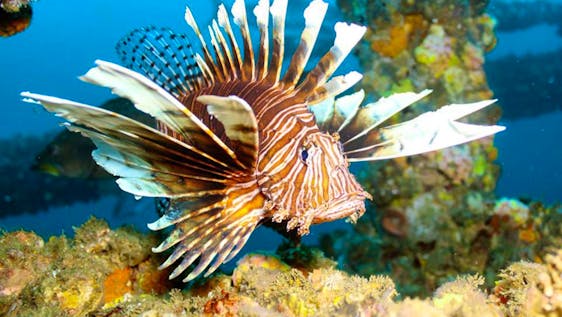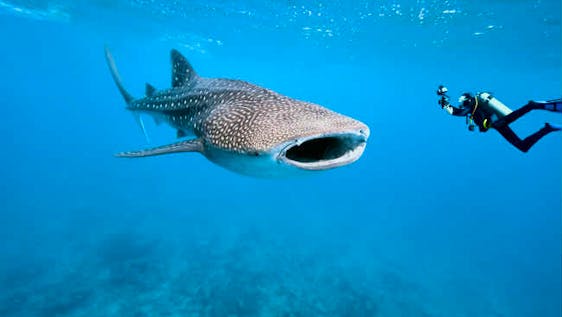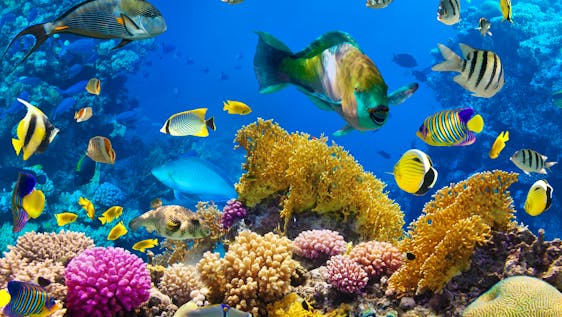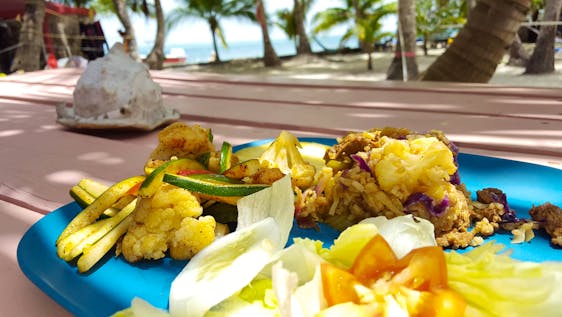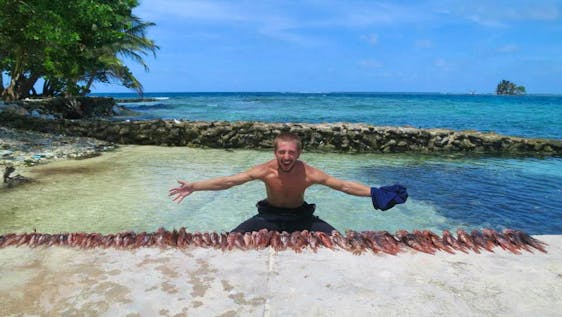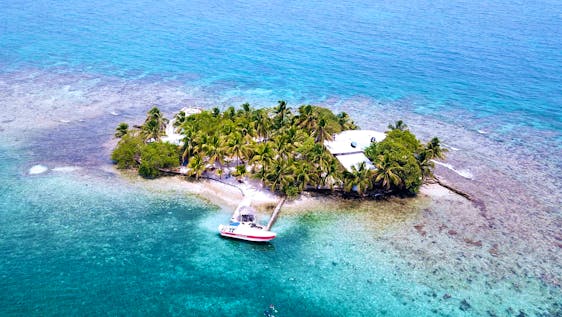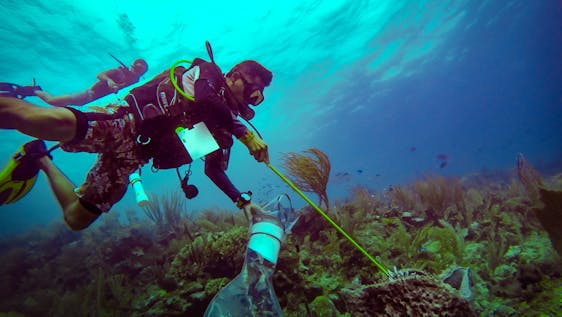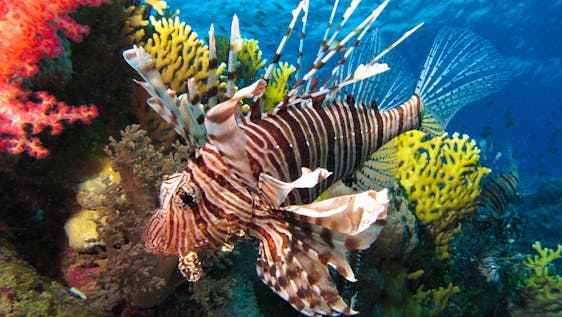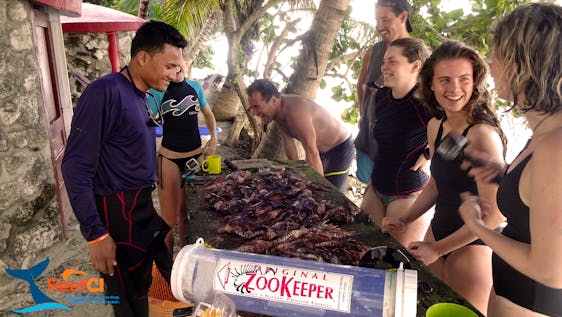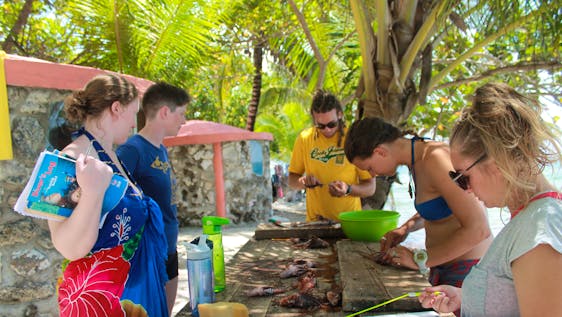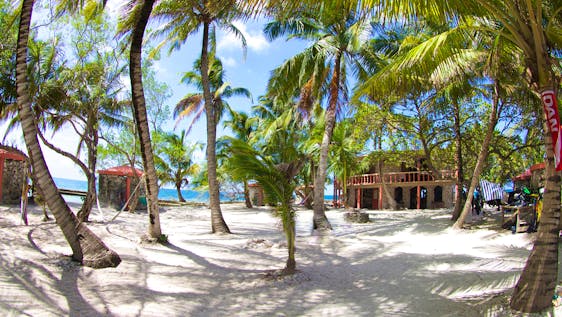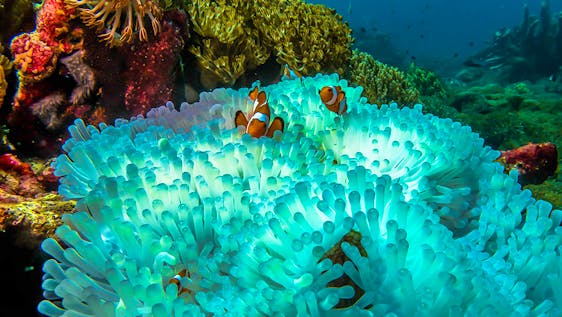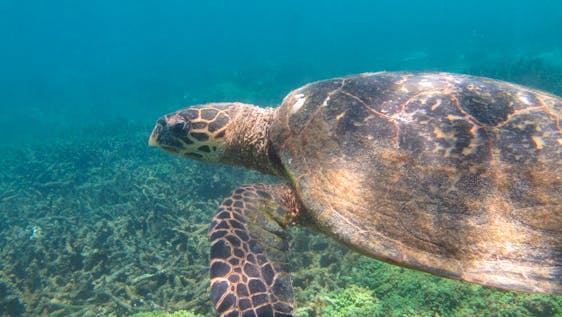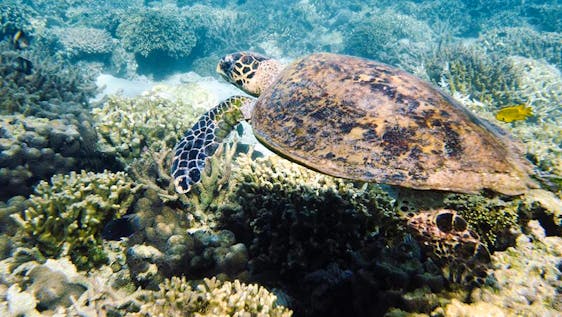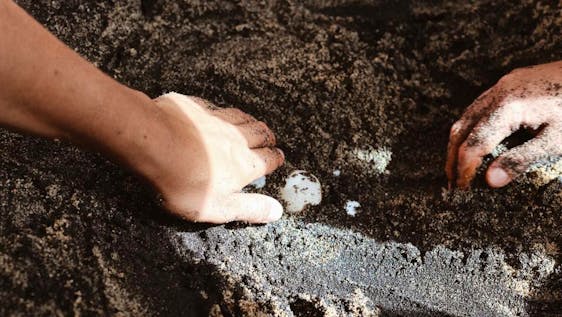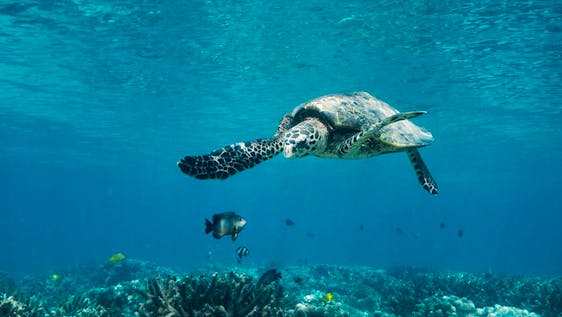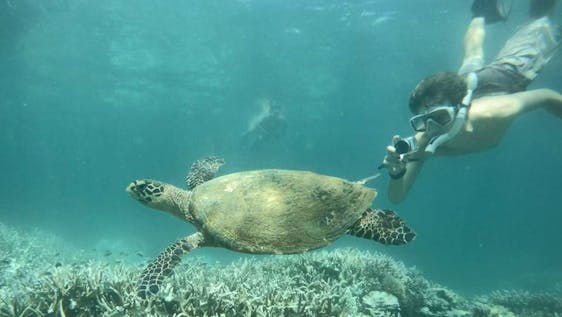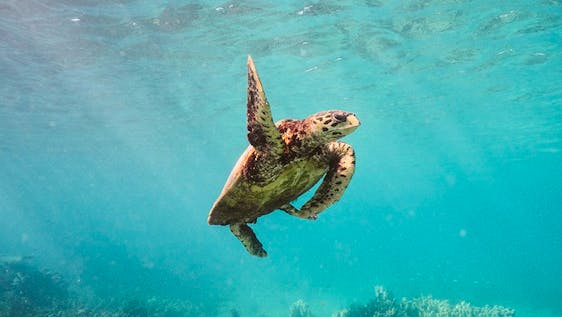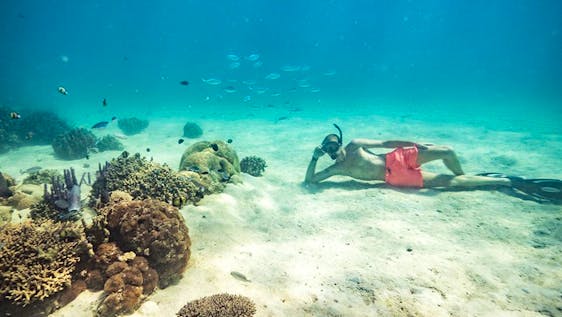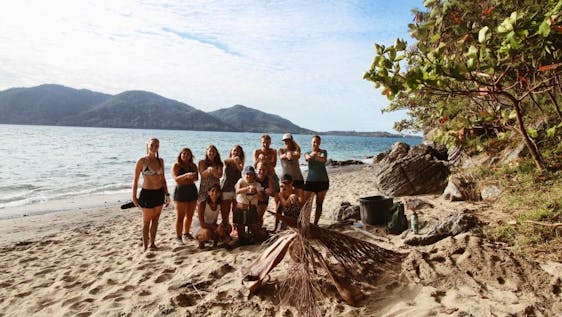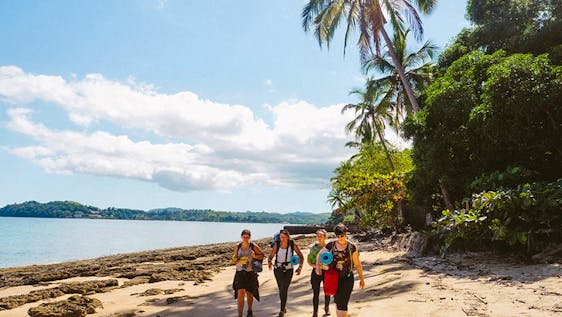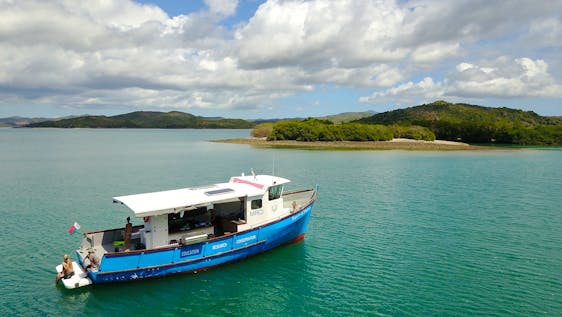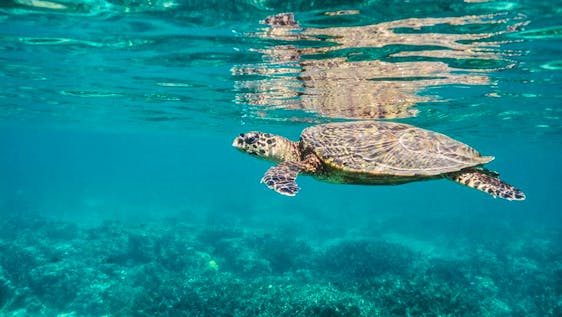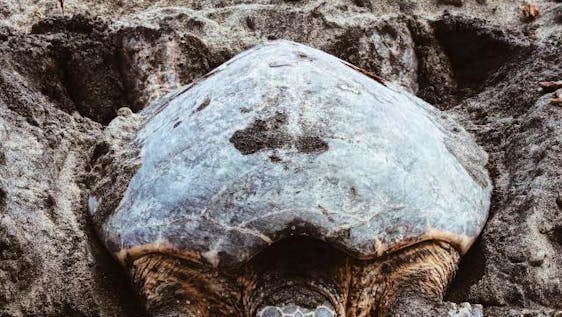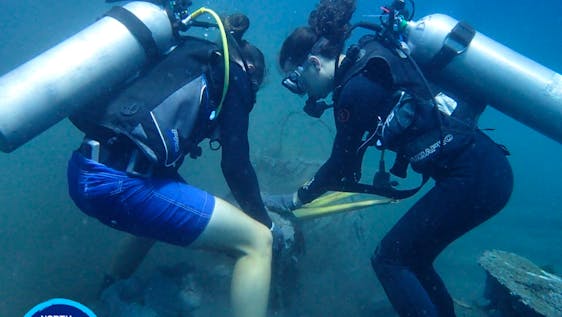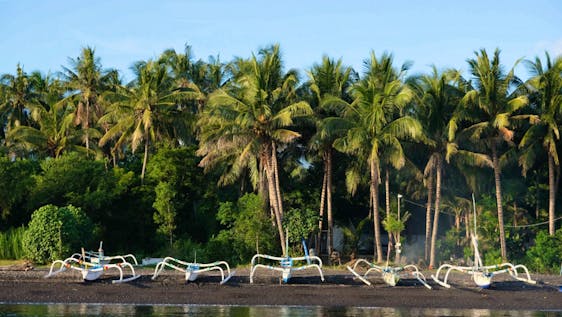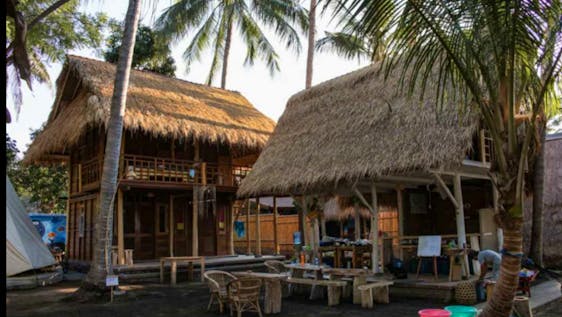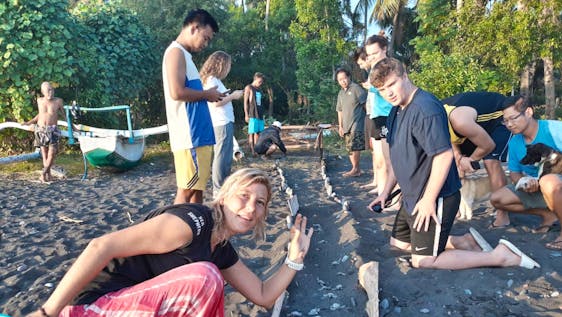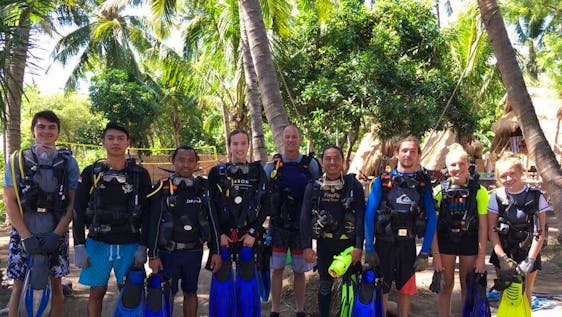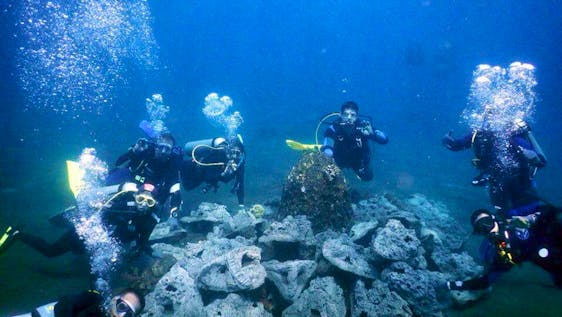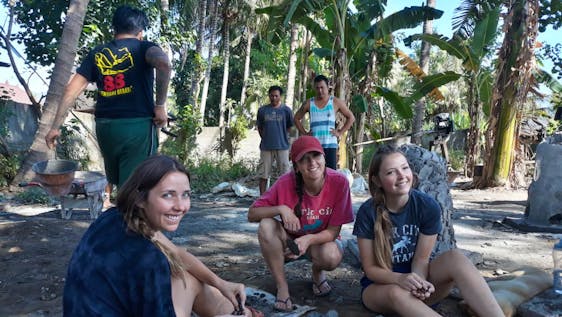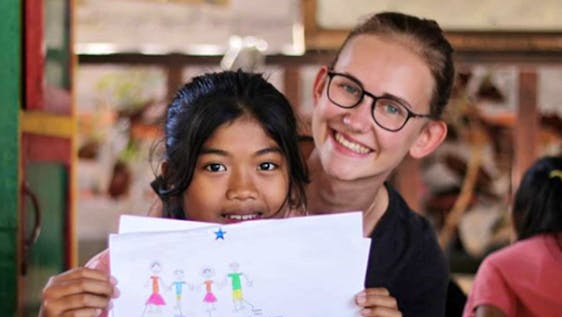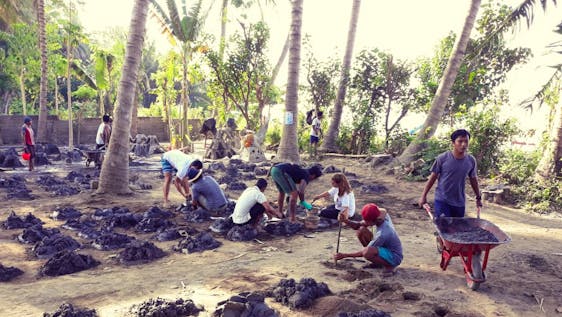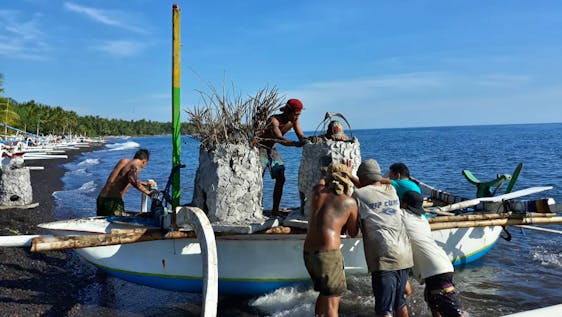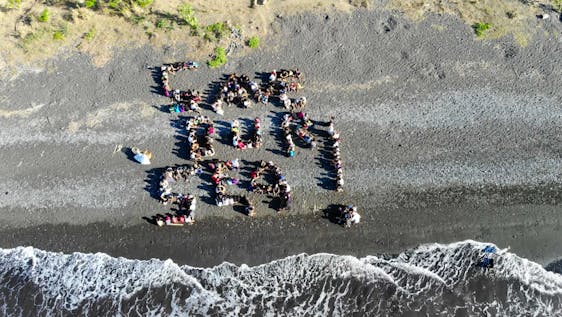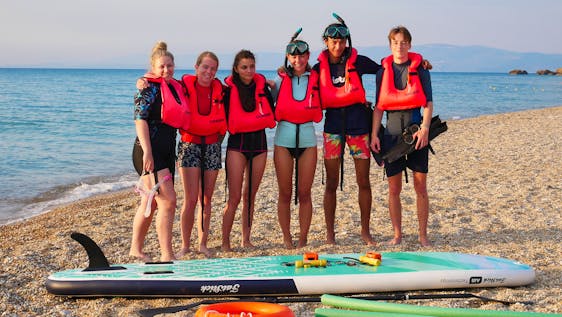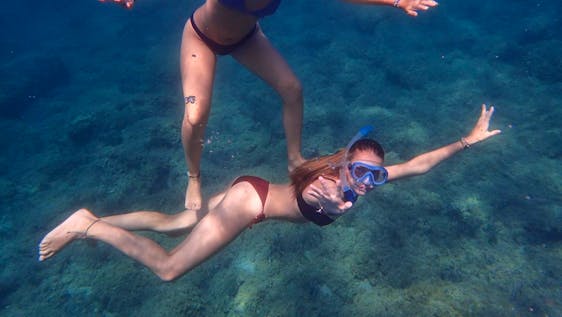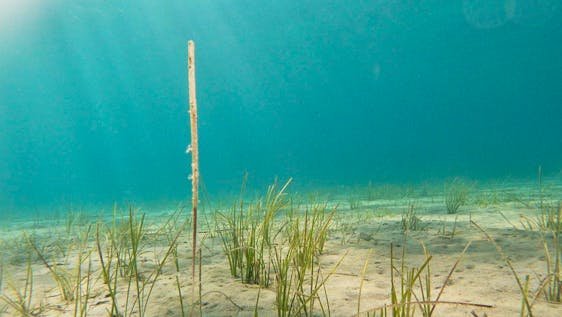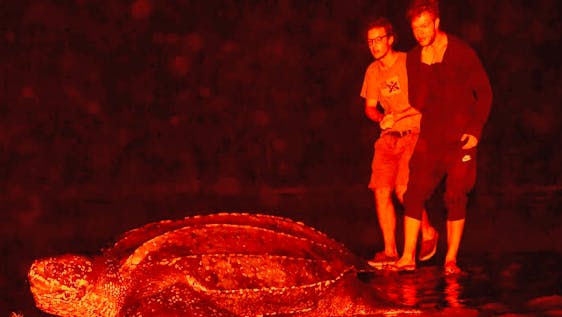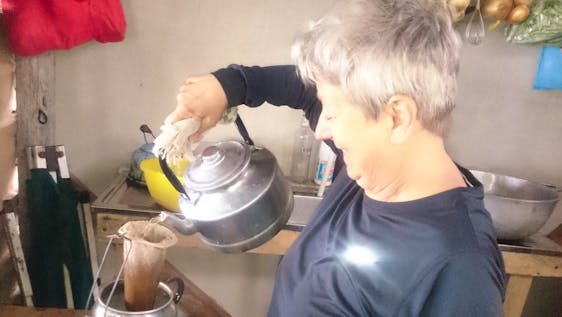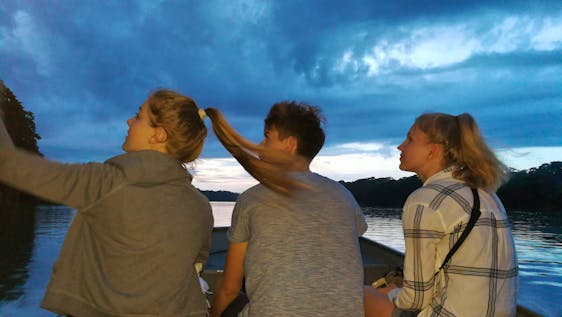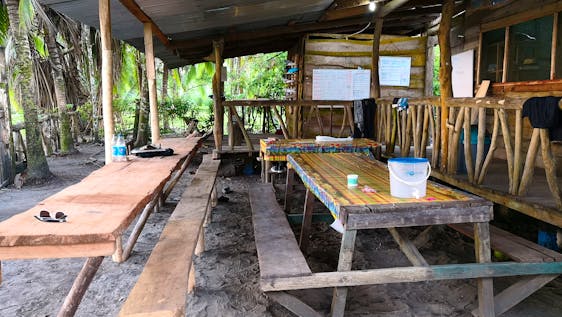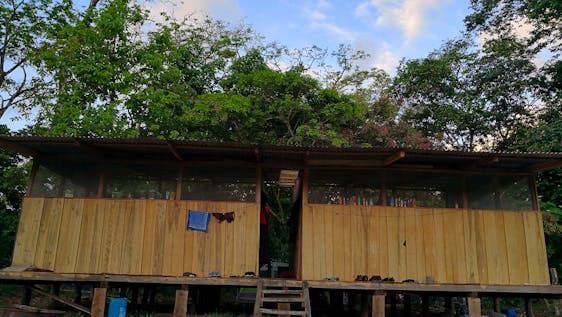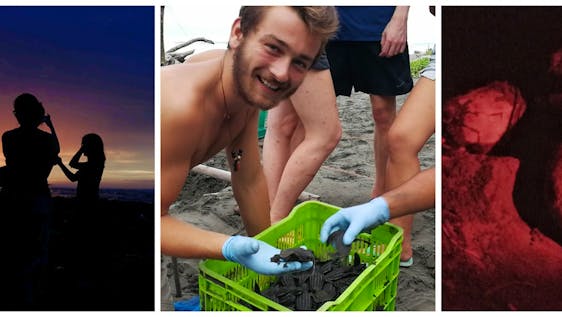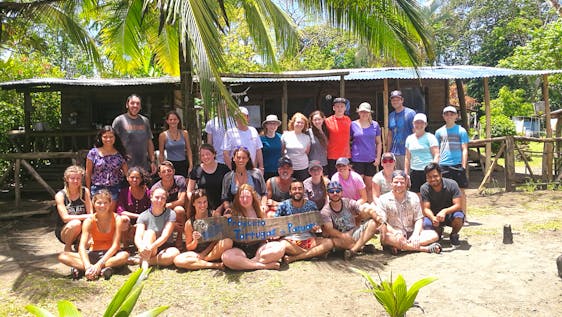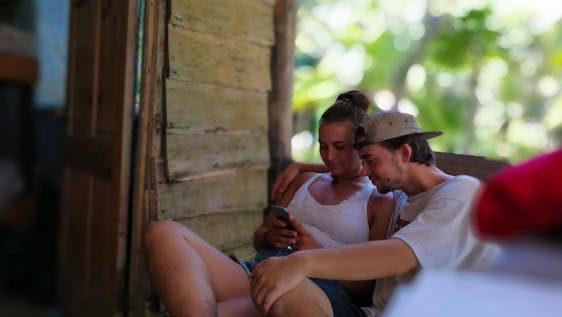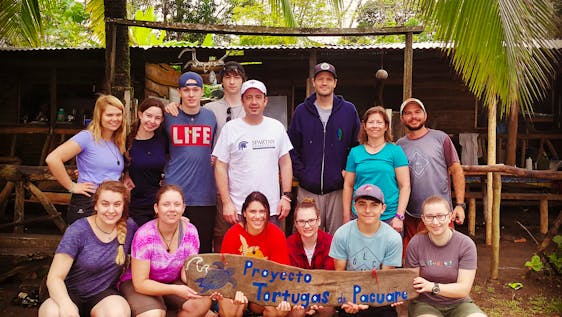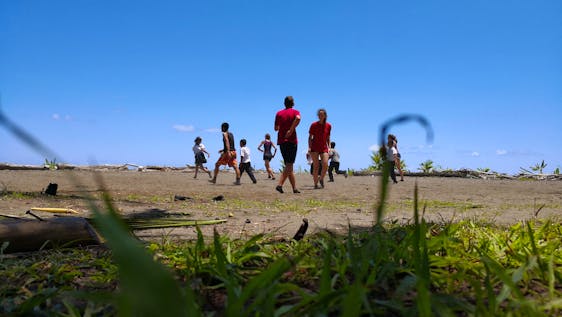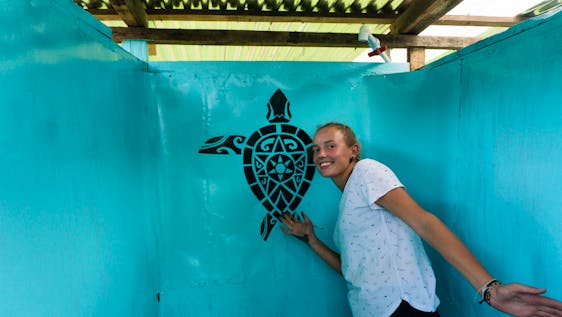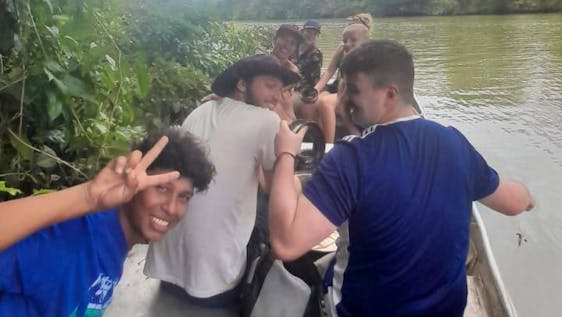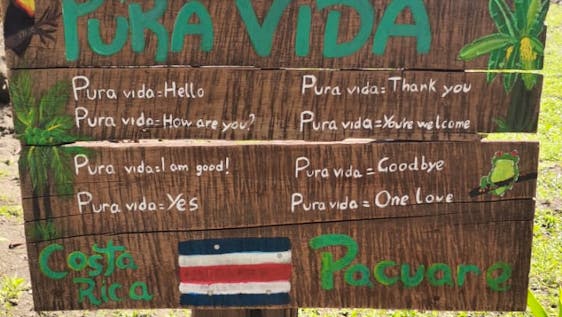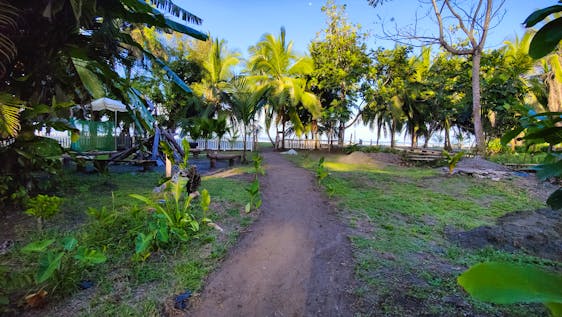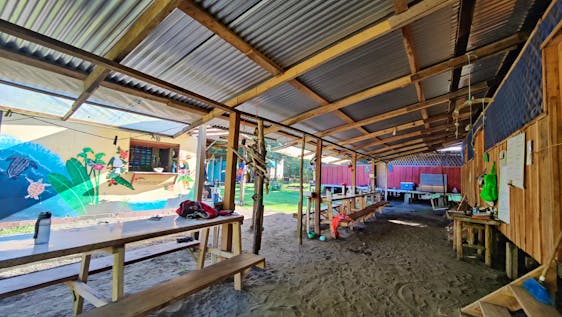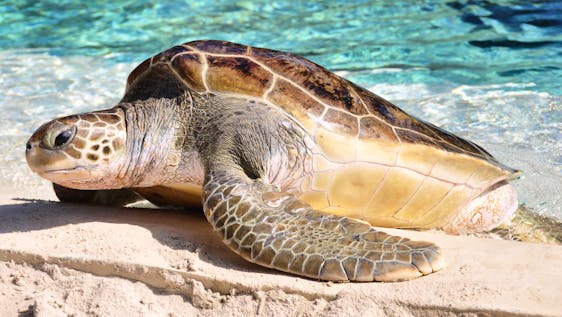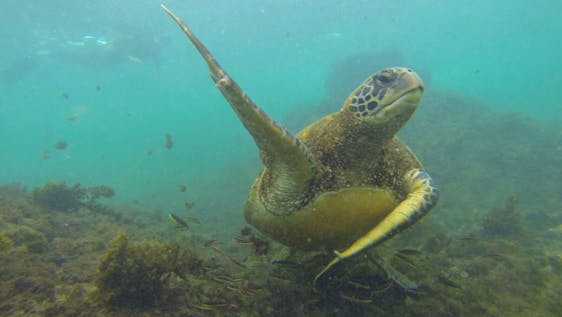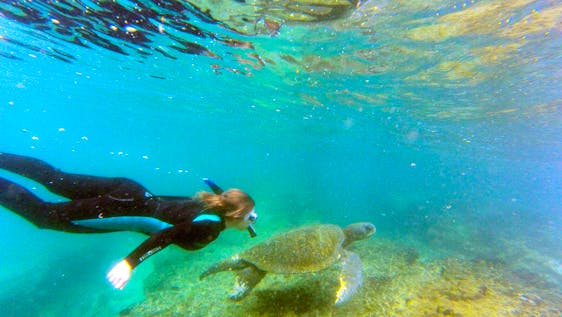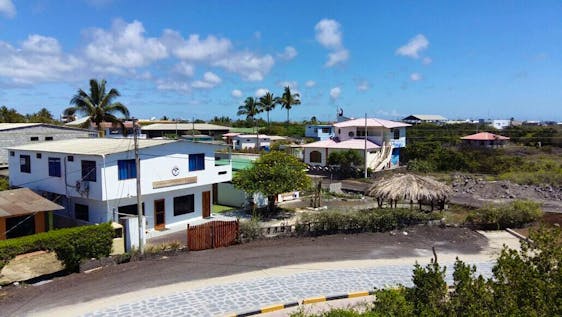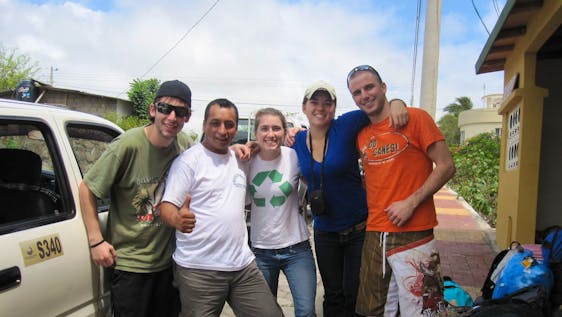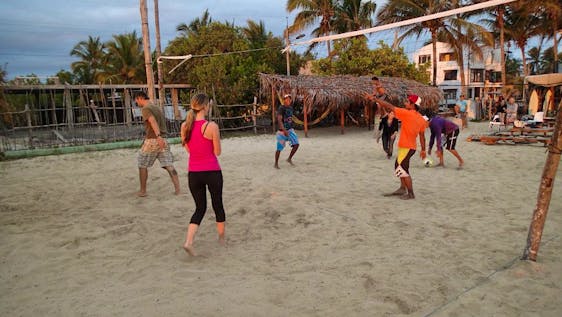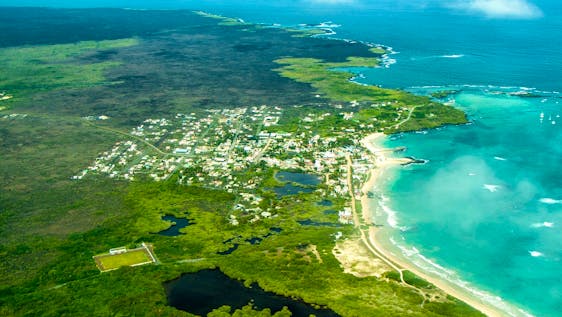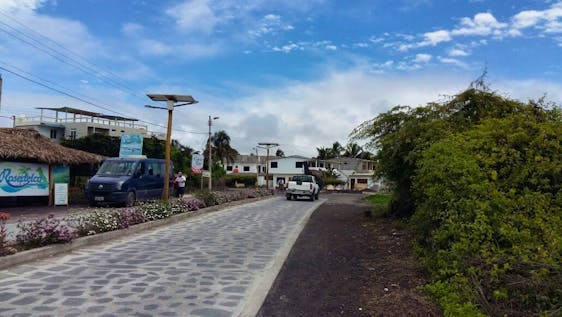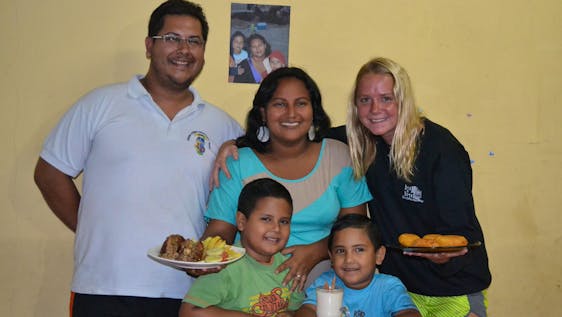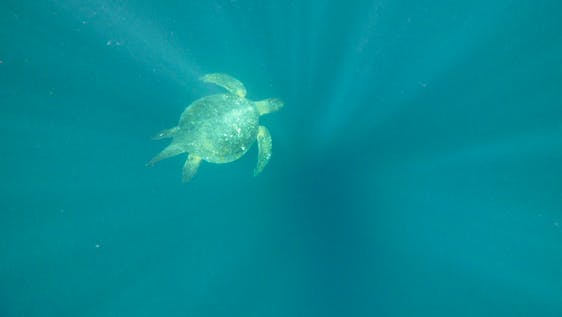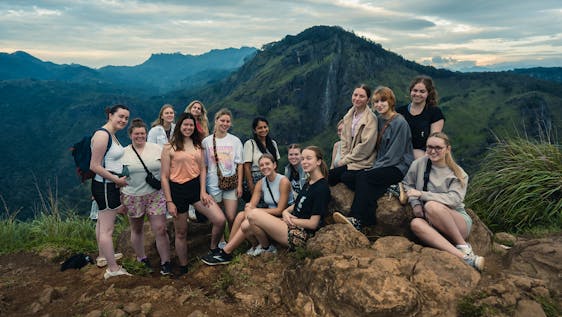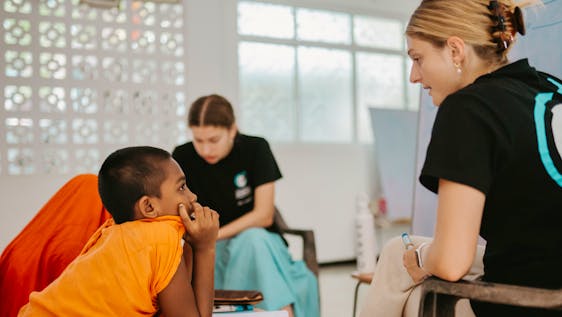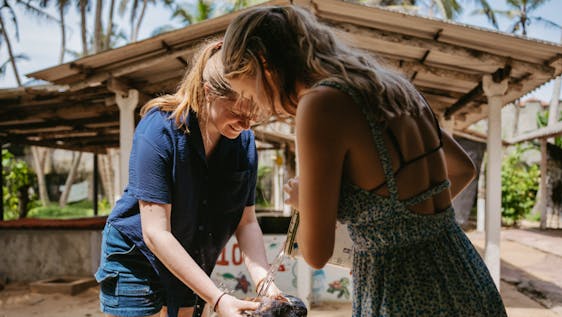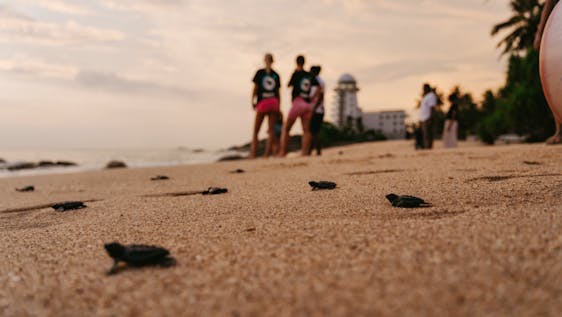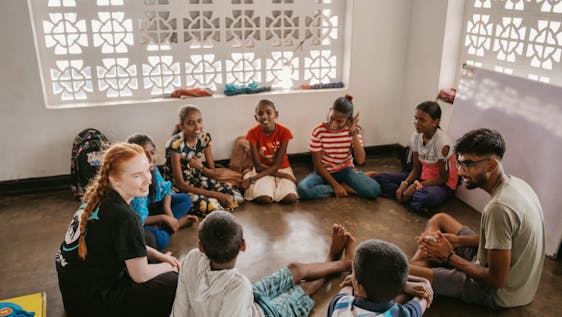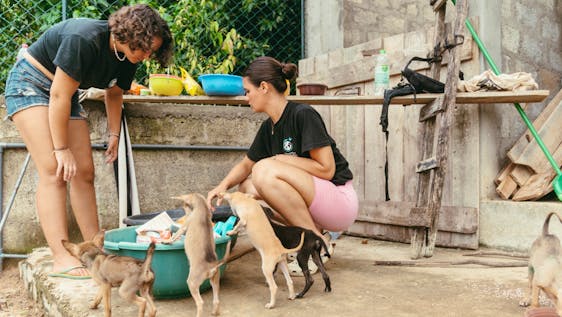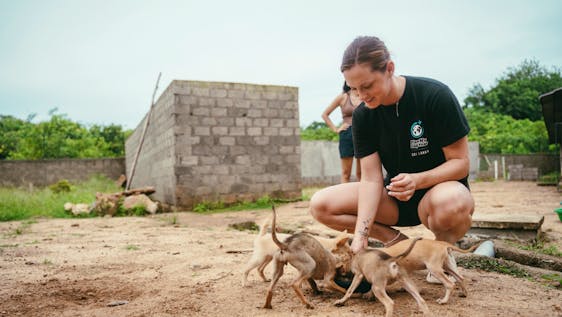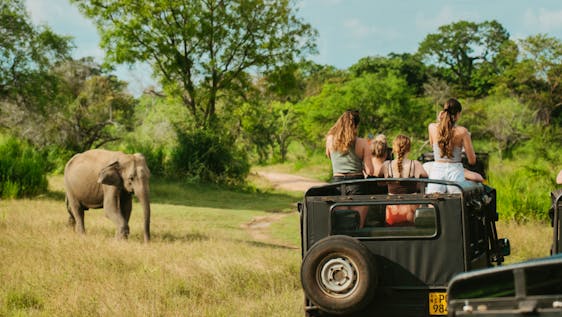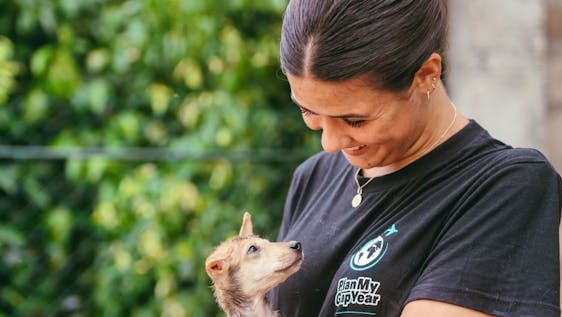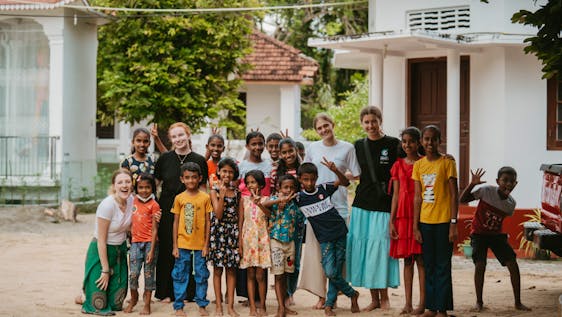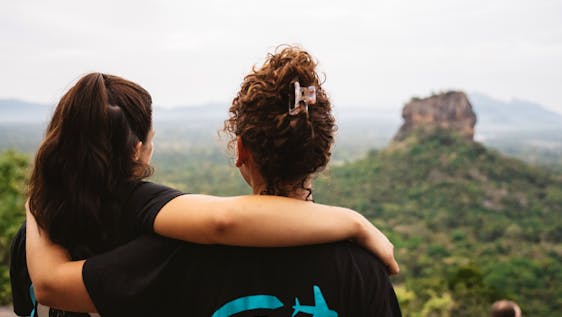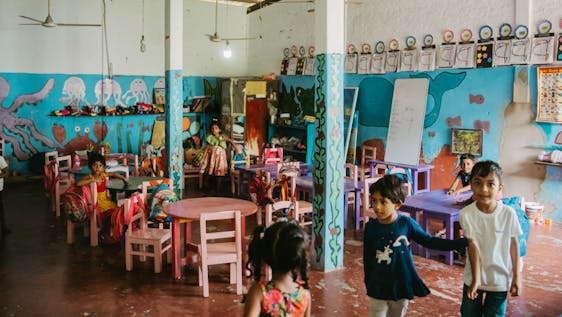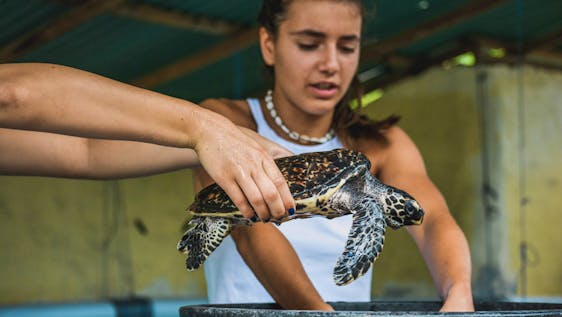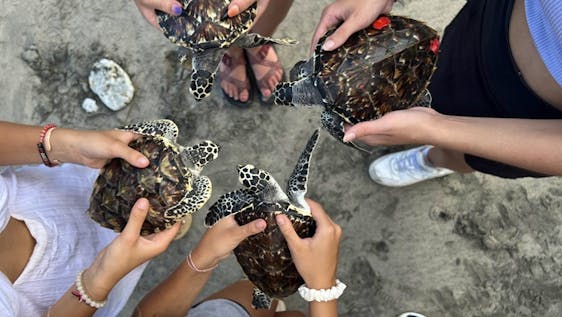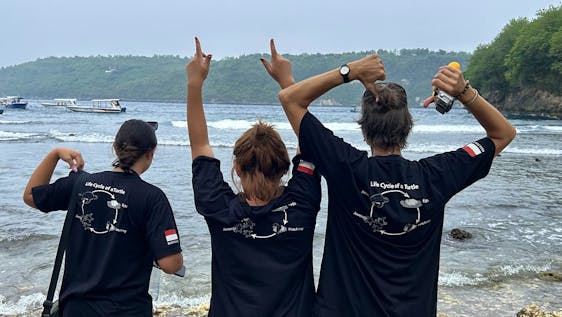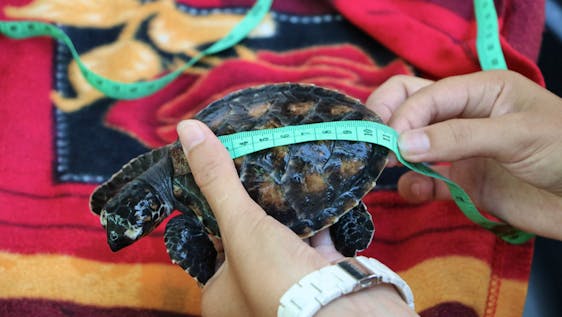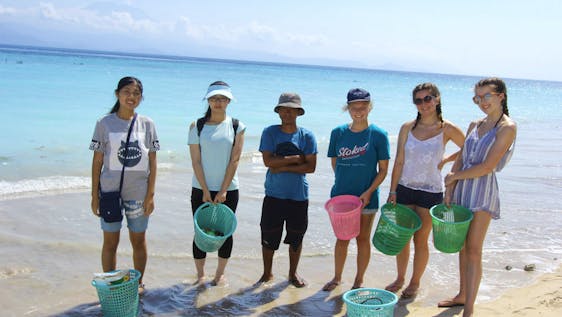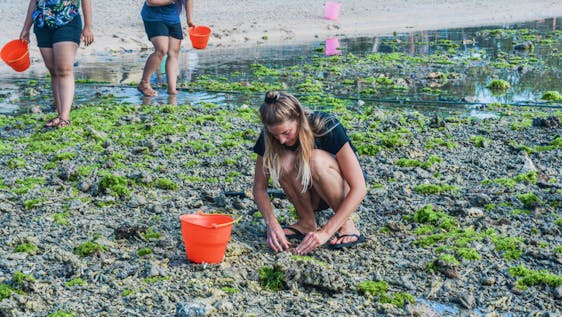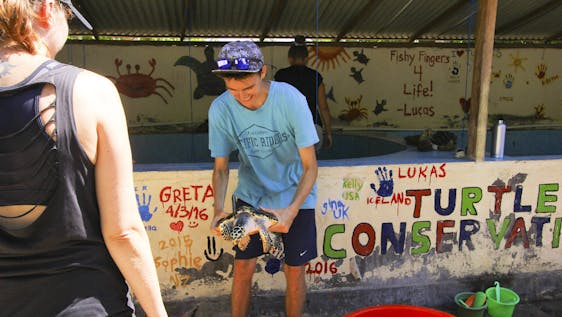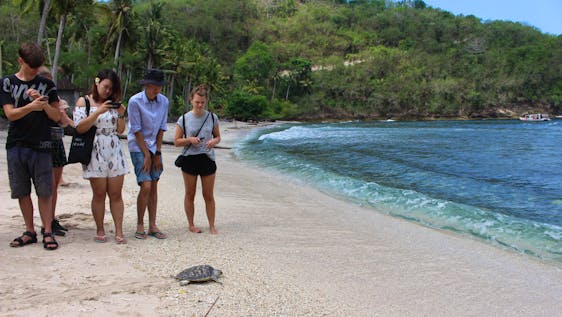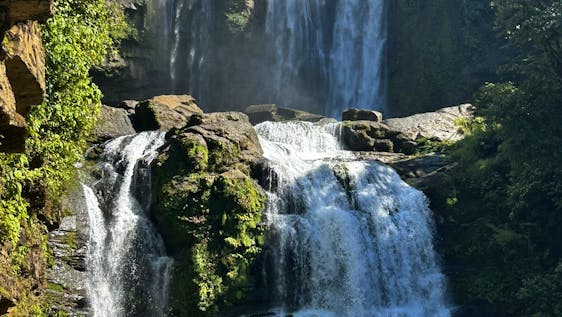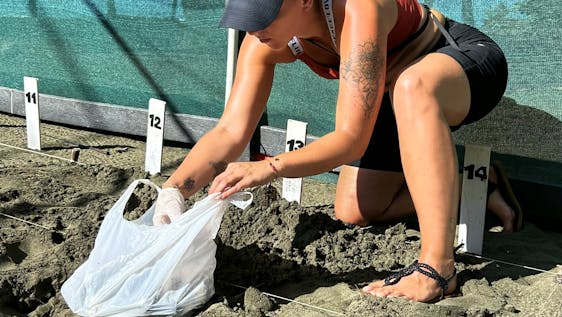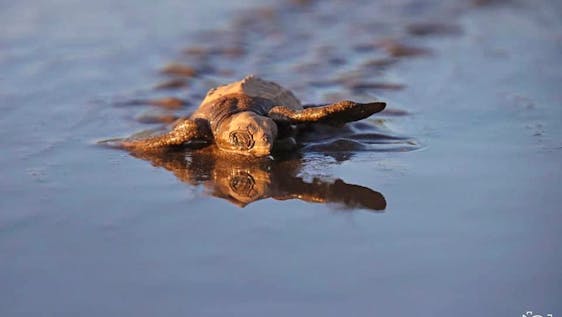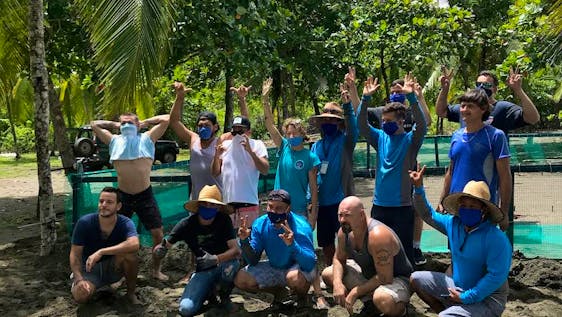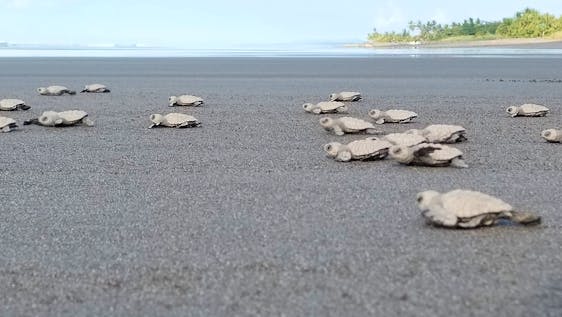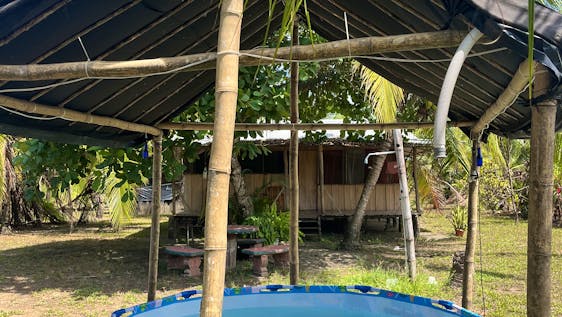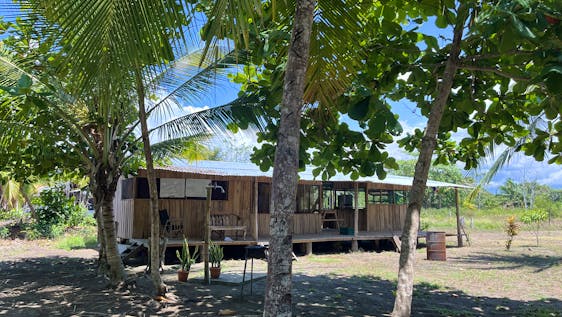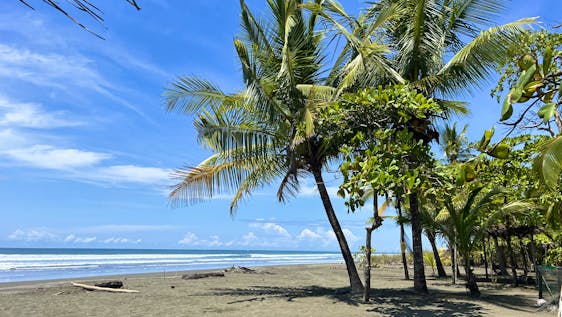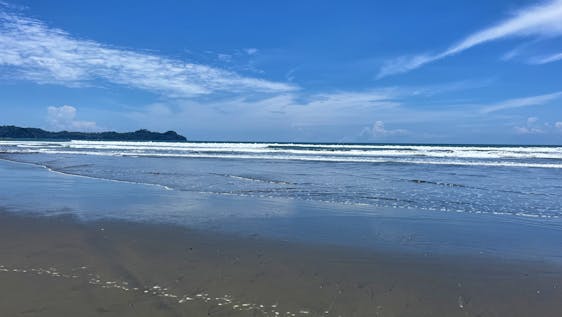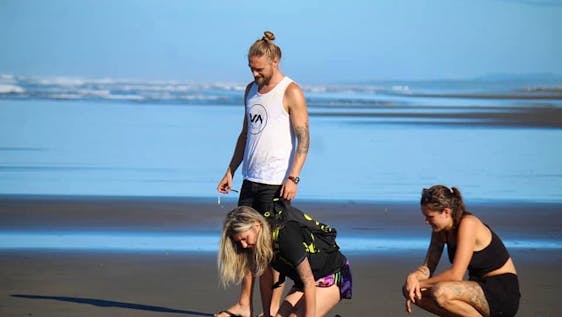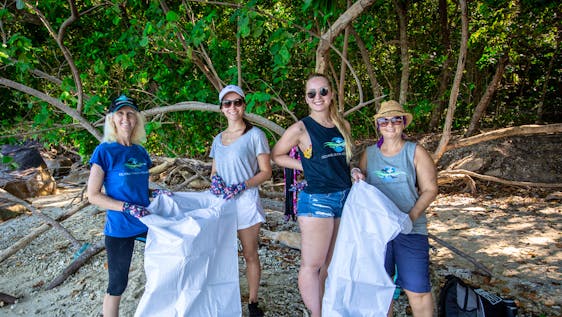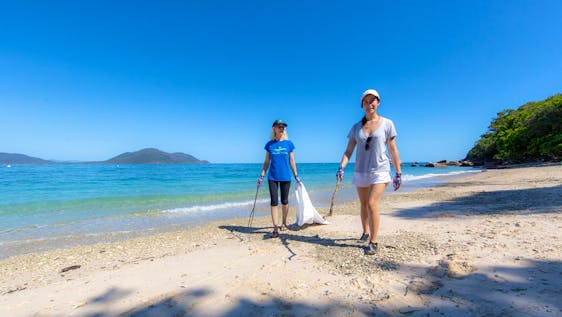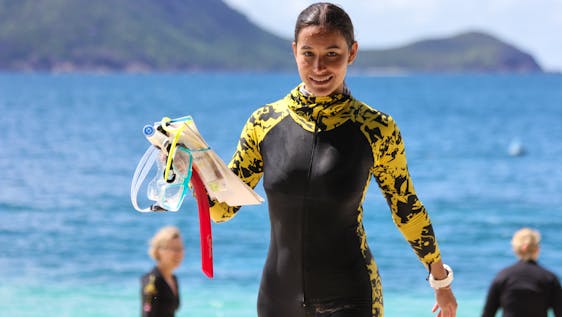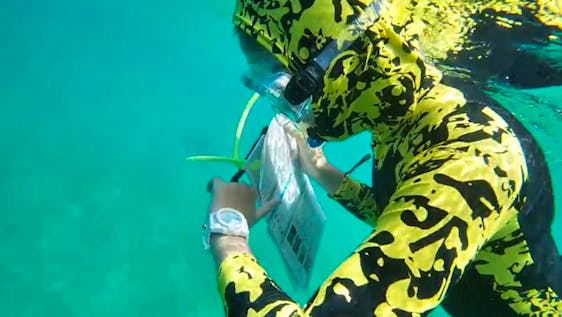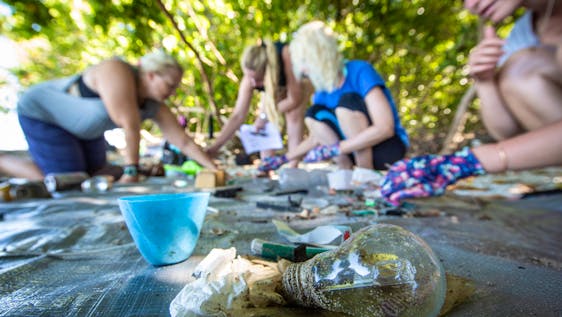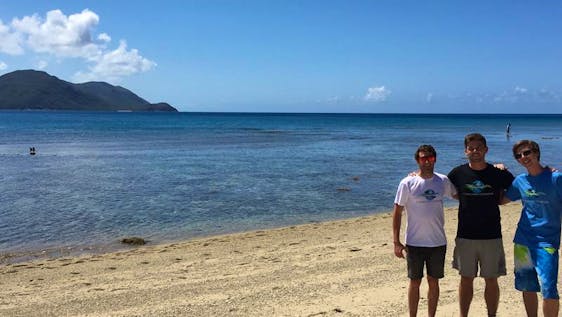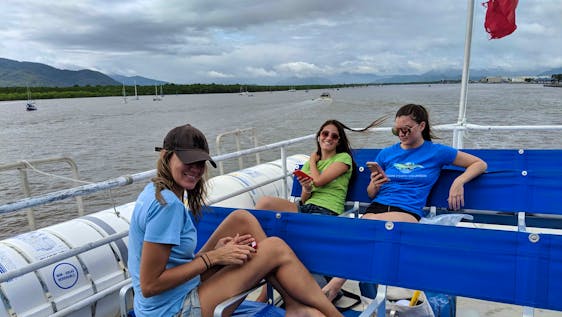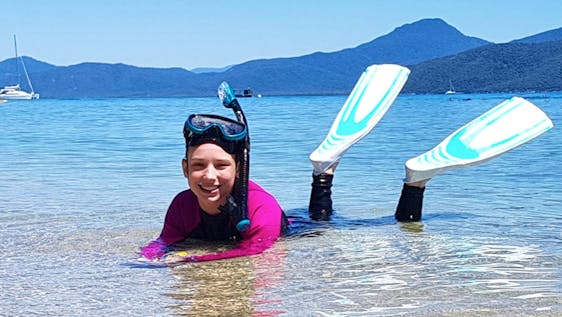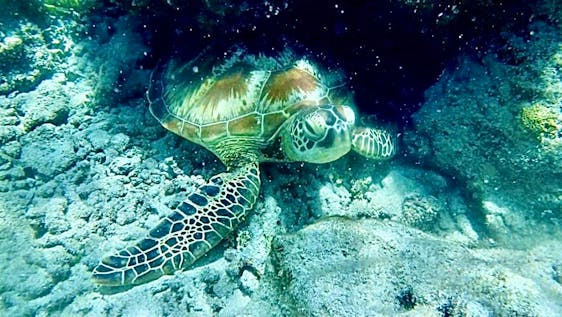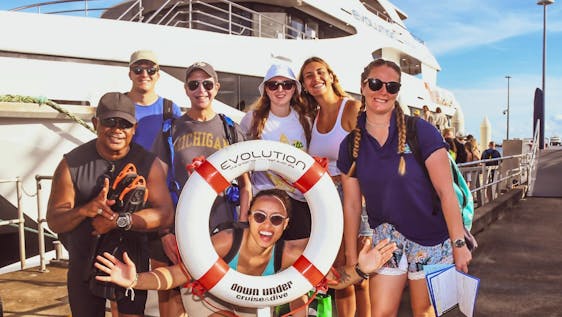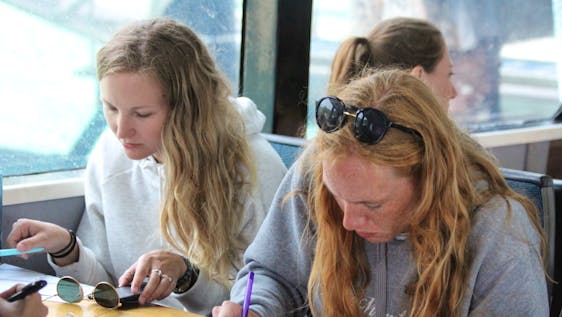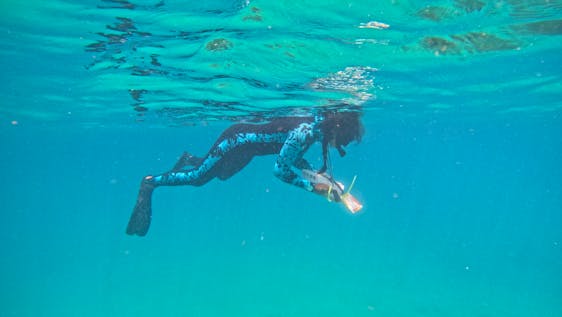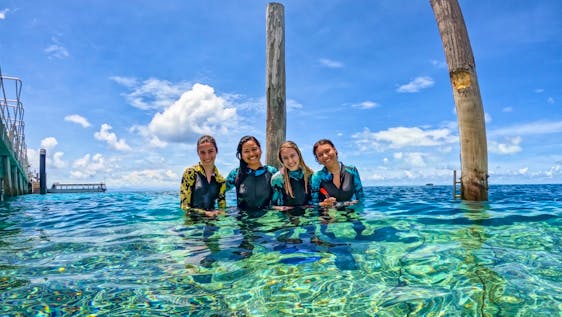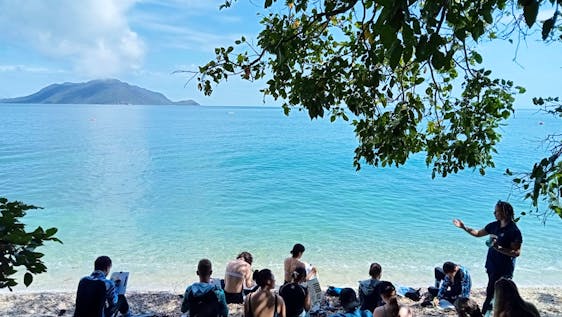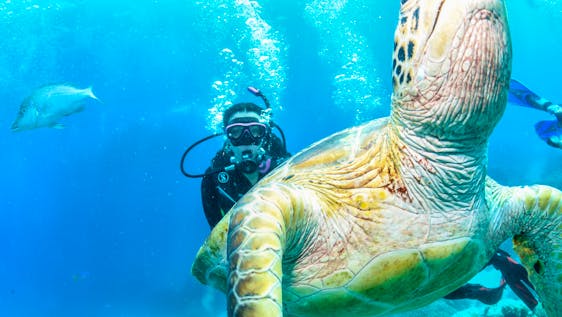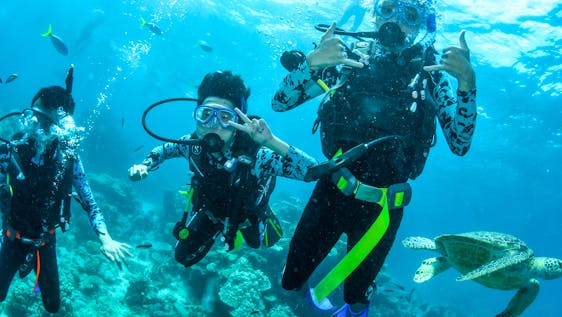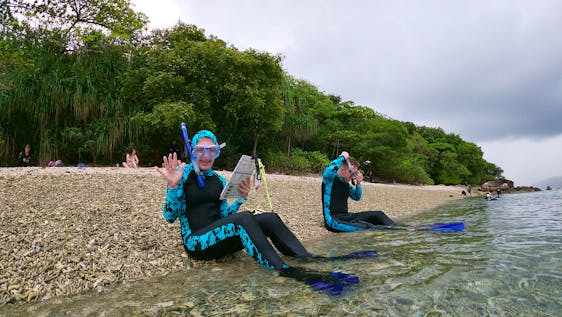Sea Turtle Conservation Volunteer
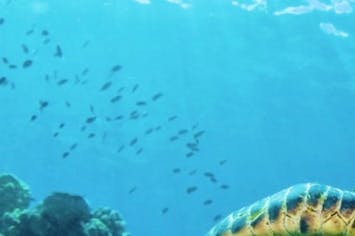
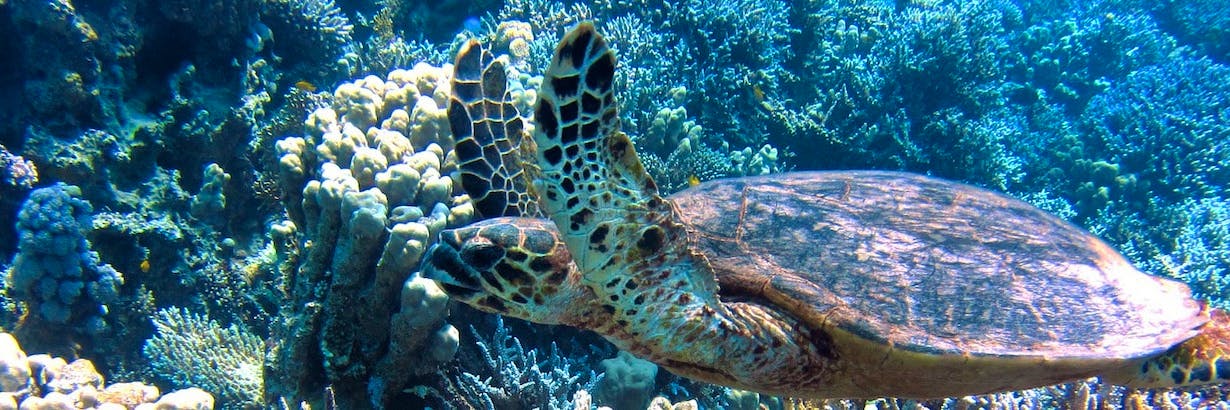
Saving Sea Turtles
Sea turtles are some of the world’s oldest creatures and have been around for more than 100 million years. They can be found in all warm and temperate waters around the globe and spend most of their lives in the water. Only the female sea turtles spend some time on the land. They come back to the beaches where they were born to lay their eggs in a nest in the sand. After that, they return directly to the ocean and leave the eggs to hatch. During one nesting season, sea turtles can lay eggs in 2 to 8 nests and each of the so called “clutches” contains an average of 100 eggs. Sea turtles often migrate over 1000 miles between feeding and nesting grounds and are great swimmers that can stay underwater for up to five hours without breathing.
Unfortunately, human activities and environmental changes have caused the worldwide sea turtle populations to reduce drastically in the past decades. All of the seven species of sea turtles are considered vulnerable or endangered and require targeted conservation and protection efforts to stop their numbers from declining. Social projects all over the world have taken on this problem and work towards the protection of the rare sea turtle species. If you have always been a fan of these ancient animals and want to support the efforts of projects worldwide to protect sea turtles, then you have come to the right place. The following text will give you important information about the different sea turtle species and their habitats, the threats they are facing and the ways you can help to save them while volunteering abroad.
🐢 Sea turtle Conservation Status 2025
By classifying sea turtles as (critically) endangered , IUCN is drawing attention to the conservation needs of sea turtle populations around the world.
Sea turtles play an important role in the maritime ecosystems. They help maintain the health of various habitats like coral reefs and grass beds. Especially the green sea turtles act as grazing animals and keep the seagrass short which is vital to keep it healthy and growing. Unfortunately, the shrinking numbers of sea turtles have already led to a decline in seagrass beds, which are important breeding grounds for other marine species such as tuna, lobster, and shrimp.
Moreover, beaches and dune systems do not get very many nutrients during the year, so very little vegetation grows on the dunes and no vegetation grows on the beach itself. This is because sand does not hold nutrients very well. Unhatched sea turtle eggs and leftover eggshells provide important nutrients for the dune vegetation which leads to a stronger root system that helps to hold the sand in the dunes and helps protect the beach from erosion. With a decline of sea turtle numbers, fewer eggs are laid on the beaches, providing fewer nutrients which would eventually result in increased erosion.
🐢 Why are Sea Turtles Endangered?
Sea turtles are facing a broad list of threats and while some of them are natural and have always existed, the majority of the threats is man-made and has lead to the drastic drop of sea turtle numbers in the last decades. One of the natural threats is that sea turtles only reach their reproductive age after 20-30 years, for around 10 years. During this time, they can lay up to 10.000 eggs, but only very few of the baby turtles that hatch survive until adulthood. Natural predators on the coast and in the water are one reason for that, but humans are playing a big role as well.
Female sea turtles always return to the beach where they were born when it is time for nesting. Increased mass tourism and construction sites on beaches have destroyed many nesting sites and left less safe space for the turtles to lay their eggs. Baby sea turtles hatch at night and seek the way to the ocean following the brightest light. Lanterns and other artificial lights can cause them to go in the wrong direction and become easy prey for predators. Interestingly, the sex of sea turtle babies is not defined by genetics but by the temperature of the sand in which the nest has been built. Warmer surroundings lead to predominantly female sea turtles and global warming is already causing a negative influence on the balance of the sexes.
🐢 What are the Biggest Threats to Sea Turtles?
Even grown-up sea turtles are not safe from the many dangers that humans pose to them. Sea turtles also have a great cultural significance in many coastal communities and are a major factor for tourism. Turtle meat and eggs have been important sources of food as it's supposed to have aphrodisiac and medical benefits, and their shells serve for jewelry, ceremonial ornaments, and utensils in the Asia Pacific region. To sum up, these are some of the most dangerous threats for sea turtles:
- Illegal hunting for consumption, sale, or trade
- Bycatch of sea turtles by commercial fishermen
- Entanglement and ingestion of marine debris
- Marine pollution
- Global warming
- Oil spills
🐢 What are the 7 Species of Sea Turtles?
There are seven species of sea turtles that vary quite significantly in their size, their habitat and their diet:
- Leatherback Turtle
- Kemps Ridley Turtle
- Turtle Conservation in Asia
- Loggerhead Turtle
- Olive Ridley Turtle
- Flatback Turtle
- Green Sea Turtle
- Hawksbill Turtle
- Asiatic Softshell Turtle
While all the species migrate quite long distances in their lives, the leatherback sea turtles have the widest range of them all and can be found as far north as Alaska and down to the southern tip of Africa. They receive their name from their unique shell, which is the only soft shell of all the species and comparable to leathery skin rather than a hard, solid shell. Leatherback sea turtles are also the largest species with a length of up to almost two meters (six feet) and they are the only species whose females may change their nesting beaches, even though they tend to stay in one region.
It’s next biggest relative is the loggerhead sea turtle that can be found in coastal bays and shallow waters of all three oceans and the Eastern Mediterranean. They seem to prefer warmer waters and don’t dive as deep as the other species. Loggerhead sea turtles are primarily carnivores and eat jellyfish, crabs and small fish.
The green sea turtle, on the contrary, is strictly herbivore as an adult, only the baby turtles eat worms and aquatic insects. As seagrass is the main part of their diets, green sea turtles are mainly found in coastal areas, bays and protected shores of the Caribbean, Australia, and the Pacific Ocean. They very rarely migrate to the open ocean.
The hawksbill sea turtles get their name from their hawk-like beak that makes it easy to distinguish them from their other relatives. They can be found in tropical and subtropical waters of all three oceans and are considered critically endangered as their pretty shell makes them the subject of illegal hunting.
The most common sea turtle with the biggest population worldwide is the olive ridley sea turtle that gets its name from its olive green colored shell. Adults measure around two feet and can weigh up to 100 pounds.
A species that only lives in the northern waters of Australia and the Gulf of Papua New Guinea is the flatback sea turtle. Its limited habitat makes it one of the rarer sea turtle species with an estimate of 20.000 nesting females existing today.
And last but not least, the rarest of all species is the kemp’s ridley sea turtle that only nests on a small strip of beach in Mexico. The females of this species nest synchronized in masses, an event that is called “arribadas” in Mexico and during which the beaches are strictly protected.
🌎 What are the Best Places to Volunteer with Sea Turtles?
As you already know, sea turtles live in all three oceans which gives you plenty of opportunities to work abroad as a sea turtle conservation volunteer. Be it South or Central America, Europe, Asia or even Australia, sea turtles nest on many beaches and need to be protected from the many dangers on land and in the water.
Costa Rica - sea turtle conservancy with a pinch of 'Pura Vida'
The most important nesting place for sea turtles is Costa Rica. The small Central American country has important nesting sites for four of the seven species on both the Pacific and the Caribbean coast. Leatherback sea turtles nest on both coasts while greens, olive ridley and hawksbill sea turtles nest on beaches on Costa Rica’s Caribbean coast. The Osa Peninsula in the south of the Pacific coast and Tortuguero on the northern Caribbean coast are the two biggest hotspots for sea turtle conservation programs in Costa Rica.
Sea turtle conservation in Southern Asia
If you’d rather work with sea turtles in Asia, then Sri Lanka or Indonesia are the right places to go. Sri Lanka has nesting sites for loggerhead, greens, hawksbill, and olive ridley sea turtles, especially in the Kosgoda area in the south. The popular tourist hotspot Bali in Indonesia offers the opportunity to work with olive ridley and green sea turtles and to explore the beautiful island during your free time as well. There will definitely be a project that will match your interests.
You see, there are so many places and opportunities to work for a sea turtle conservation project abroad that no matter where you would like to go, there is the right program for you. From Costa Rica to Spain and Australia, there are projects looking for volunteers all over the world.
🦺 8 Things You Can Do To Save Sea Turtles
There are many different ways to protect sea turtles and not all projects work in the same manner. Depending on what you are looking for, this introduction into the tasks and benefits of sea turtle volunteers will be helpful for you to find the right program. Whether you want to get hands-on and work with the sea turtles every day or you want to educate locals and tourists on ways to protect sea turtles and their habitat, there will be a program that matches your expectations and skill set.
🤸🏽♀️ What Will I Do as a Sea Turtle Conservation Volunteer?
Depending on which sea turtle conservancy project you are going to join, there are many possible tasks that your work is going to entail. While some of the projects focus on the work in the hatcheries, others might include research and data collection or regularly open their doors to tourists in order to spread the word about the importance of saving sea turtles. Most sea turtle conservation projects also work closely with the local communities which includes communal beach cleanups, informational events, school lessons and much more. This is an overview of the most common tasks while volunteering with sea turtles:
- feeding and caring for sea turtles at the center
- going on night patrols to collect sea turtle eggs
- relocating eggs to hatcheries where they are safe from poachers
- maintaining and cleaning facilities
- cleaning and constructing hatcheries
- releasing older babies back into the ocean
- actively saving turtles
- engaging in beach cleanups
- giving hatchery tours to tourists and educating them about the importance of preserving sea turtles
There are a few volunteering projects that focus on in-water studies of specific sea turtle species and thus include a different range of tasks for their volunteers. Depending on weather conditions, a lot of the working time will be spent on boats or preparing the equipment for the next outing.
One thing that sea turtle conservation volunteers should be aware of: you need to be prepared for sometimes physically demanding work and unusual working hours as sea turtle nesting only occurs at night. Most of the camps, especially in Costa Rica, are in remote areas and have very simple living conditions. So if you have a love for nature and prefer outdoor living to luxury and comfort, working for a sea turtle conservation project will be a perfect choice!
🐢 How can I work with Baby Sea Turtles?
As most baby sea turtles don't make their way into the ocean or survive to adulthood, there are many projects that try to tackle that problem to help grow sea turtle numbers. They will collect eggs from the nest to keep them safe from robbers and predators and take them to their hatchery where the baby sea turtles can hatch safely. The babies will be released at a safe beach and the volunteers make sure that all of the baby sea turtles make their way into the water. Some projects might keep baby sea turtles until they have reached a certain size so that they are less likely to be eaten by predators once they have been released.
🎁 5 Benefits of Working with Sea Turtles
Hands-on Experience
Working hands-on with sea turtles, watching them nest and making sure the babies can hatch and grow up safely are not the only highlights of being a sea turtle volunteer. There are plenty of other reasons why this kind of volunteer work could be the right choice for you.
Learning Opportunity
If you are interested in studying biology or veterinary medicine, a volunteer program working with sea turtles will be a great fit. You will gain hands-on experience and get a first insight into the daily work of trained experts and marine biologists, which will certainly come in handy at a later point in your career.
Future Career Opportunities
Being able to list this kind of work experience on your resume is another bonus, even if you are not planning on pursuing a career in this field. It shows that you are capable of physically hard and hands-on work and that you are motivated to volunteer your free-time to a meaningful cause.
Learning new languages
Depending on where you choose to volunteer, you might get to refine your language skills whilst working on site. Immersing yourself in a foreign culture and living abroad will definitely make you grow as a person and give you a different perspective. And let’s not forget that the time you spend at a sea turtle conservation volunteer project will also be incredibly fun! You will get to enjoy all the perks of living by the sea like swimming and snorkeling and experiencing the beauty of the ocean at the end of your workday.
Night Patrols with Baby Sea Turtles
Night patrols at the beach during nesting and hatching seasons and the release of baby sea turtles into the ocean are only some of the highlights you will never forget. The best part is that you will be surrounded by like-minded individuals that share your passion for sea turtle conservation. After working and living together for a while, these people might even become your close friends! If you think that joining a sea turtle conservancy project as a volunteer is just what you were looking for, then go ahead and get started right now! We would love to help you find the right project for you!
 Activities
Activities
 Waste Reduction
Waste Reduction
 Green Sea Turtle
Green Sea Turtle
 Animal
Animal
 Leatherback Turtle
Leatherback Turtle
 Hotspots
Hotspots
 Marine Life
Marine Life
 Americas
Americas
 Central America
Central America
 Plastic Reduction
Plastic Reduction
 Costa Rica
Costa Rica
 Sloth Sanctuary
Sloth Sanctuary
 Vegan
Vegan
 Scouts
Scouts
 Hawksbill Turtle
Hawksbill Turtle
 Manuel Antonio
Manuel Antonio
 Ocean Cleaning
Ocean Cleaning
 Olive Ridley Turtle
Olive Ridley Turtle
 Beach Cleaning
Beach Cleaning
 Asia
Asia
 Wildlife Conservation
Wildlife Conservation
 Environment
Environment
 Yoga
Yoga
 Diving
Diving
 Coral Reef
Coral Reef
 Marine Conservation
Marine Conservation
 Africa
Africa
 Diving certificate
Diving certificate
 Premium
Premium
 Southern Asia
Southern Asia
 Sri Lanka
Sri Lanka
 Eastern Africa
Eastern Africa
 Madagascar
Madagascar
 Nosy Komba
Nosy Komba
 Loggerhead Turtle
Loggerhead Turtle
 Europe
Europe
 Southern Europe
Southern Europe
 Greece
Greece
 Kefalonia
Kefalonia
 Families with small kids
Families with small kids
 Limon
Limon
 Flatback Turtle
Flatback Turtle
 Monkey Conservation
Monkey Conservation
 South East Asia
South East Asia
 Indonesia
Indonesia
 Shark Conservation
Shark Conservation
 Galapagos
Galapagos
 Ray Conservation
Ray Conservation
 Voluntourism
Voluntourism
 Volunteer and Travel
Volunteer and Travel
 Surfing
Surfing
 Manatee Conservation
Manatee Conservation
 Whale Shark
Whale Shark
 Ghana
Ghana
 Western Africa
Western Africa
 Belize
Belize
 Bali
Bali
 Spider Monkey
Spider Monkey
 Intern Abroad
Intern Abroad
 Spanish Courses
Spanish Courses
 Language Course
Language Course
 Nursing Internship
Nursing Internship
 Machu Picchu
Machu Picchu
 Animal Shelter
Animal Shelter
 Jaguar Conservation
Jaguar Conservation
 South America
South America
 National Park
National Park
 Bird Conservation
Bird Conservation
 Dog
Dog
 Ecuador
Ecuador
 Oceania
Oceania
 Australia
Australia
 Queensland
Queensland
 Great Barrier Reef
Great Barrier Reef
 Cairns
Cairns
 Australia and New Zealand
Australia and New Zealand
 Snorkeling
Snorkeling
 Conservation Work
Conservation Work
 Capuchin Monkey
Capuchin Monkey
 Volleyball
Volleyball
 Ubud
Ubud
 Parrot
Parrot
 Howler Monkeys
Howler Monkeys
 Tortoise Conservation
Tortoise Conservation
 Thailand
Thailand
 Dolphin Conservation
Dolphin Conservation
 Reptile Conservation
Reptile Conservation
 Reforestation
Reforestation
 Toucan
Toucan
 Bottlenose Dolphin
Bottlenose Dolphin
 Cats
Cats
 Amazon Rainforest
Amazon Rainforest
 Spain
Spain
 Spur-thighed Tortoise
Spur-thighed Tortoise
 Street Animals
Street Animals
 Tenerife
Tenerife
 Brazil
Brazil
 Manta Ray
Manta Ray
 Plant Conservation
Plant Conservation
 PADI Divemaster
PADI Divemaster
 Blacktip Reef Shark
Blacktip Reef Shark
 Giant Tortoise
Giant Tortoise
 Seychelles
Seychelles
 South Africa
South Africa
 Southern Africa
Southern Africa
 Ragged Tooth Shark
Ragged Tooth Shark
 Whale Conservation
Whale Conservation
 Planting Trees
Planting Trees
 Crocodile
Crocodile
 Butterfly Conservation
Butterfly Conservation
 Insect Conservation
Insect Conservation
 Mozambique
Mozambique
 Humpback Whale
Humpback Whale
 Leopard Shark
Leopard Shark
 San Jose
San Jose
 Mexico
Mexico
 Oaxaca
Oaxaca
 Western Asia
Western Asia
 Turkey
Turkey
 Maldives
Maldives
 Tanzania
Tanzania
 Zanzibar
Zanzibar
 Fiji
Fiji
 Melanesia
Melanesia
 Italy
Italy
 Raja Ampat
Raja Ampat
 Sperm Whale
Sperm Whale
 Malaysia
Malaysia
 Nicaragua
Nicaragua
 Crete
Crete
 Bear Conservation
Bear Conservation
 Caiman
Caiman
 Otter Conservation
Otter Conservation
 Whitetip Reef Shark
Whitetip Reef Shark
 Guatemala
Guatemala
 Nosy Be
Nosy Be
 Panama
Panama
 Grey Reef Shark
Grey Reef Shark
 Antigua
Antigua
 Veterinary Training
Veterinary Training
 Macaw
Macaw
 Common Dolphin
Common Dolphin
 Peru
Peru
 Safari
Safari
 Great White Shark
Great White Shark
 Hammerhead Shark
Hammerhead Shark
 Ecological Farming
Ecological Farming
 Ocelot
Ocelot
 Tapir
Tapir
 Sloth Bear
Sloth Bear
 Leopardus Conservation
Leopardus Conservation
 Tamarin
Tamarin
 Indigenous cultures
Indigenous cultures
 Hiking
Hiking
 Elephant Conservation
Elephant Conservation
 Asiatic Softshell Turtle
Asiatic Softshell Turtle
 Asian Elephant
Asian Elephant
 Cambodia
Cambodia
 Rio de Janeiro
Rio de Janeiro
 Music
Music
 Bangkok
Bangkok
 Education
Education
 Primary School
Primary School
